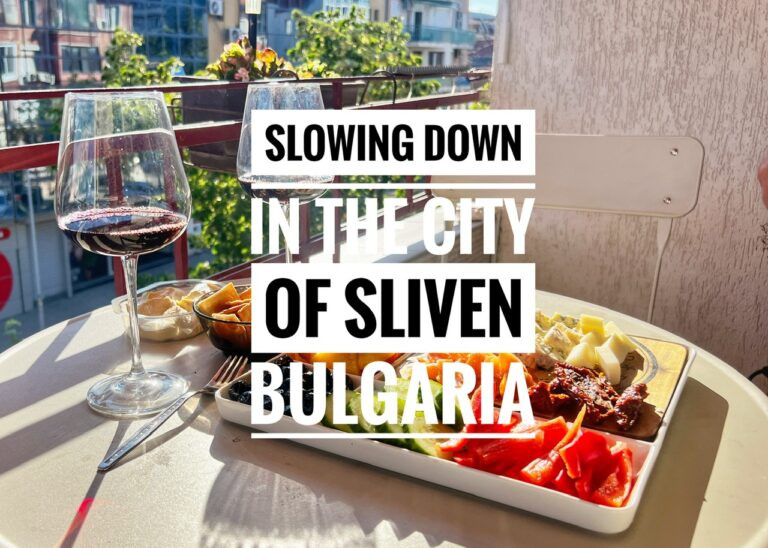
While in Buenos Aires, we unexpectedly fell in love. When we visited the “Paris of South America” in 2016, we knew we found her attractive and wanted to return. But the truth is, in those ridiculously short two days, we didn’t even have a chance to bud a romance. But during our rendezvous in September 2023, we experienced some of the genuine, and not just tourist culture. We met local friends. We took yoga classes and made friends with shopkeepers. It easily launched itself into our top three world cities list (1 million+). All this said, upon our departure, we’re almost always ready to leave a place, but when we left Buenos Aires, we’re only longing for more….
Arriving to Buenos Aires
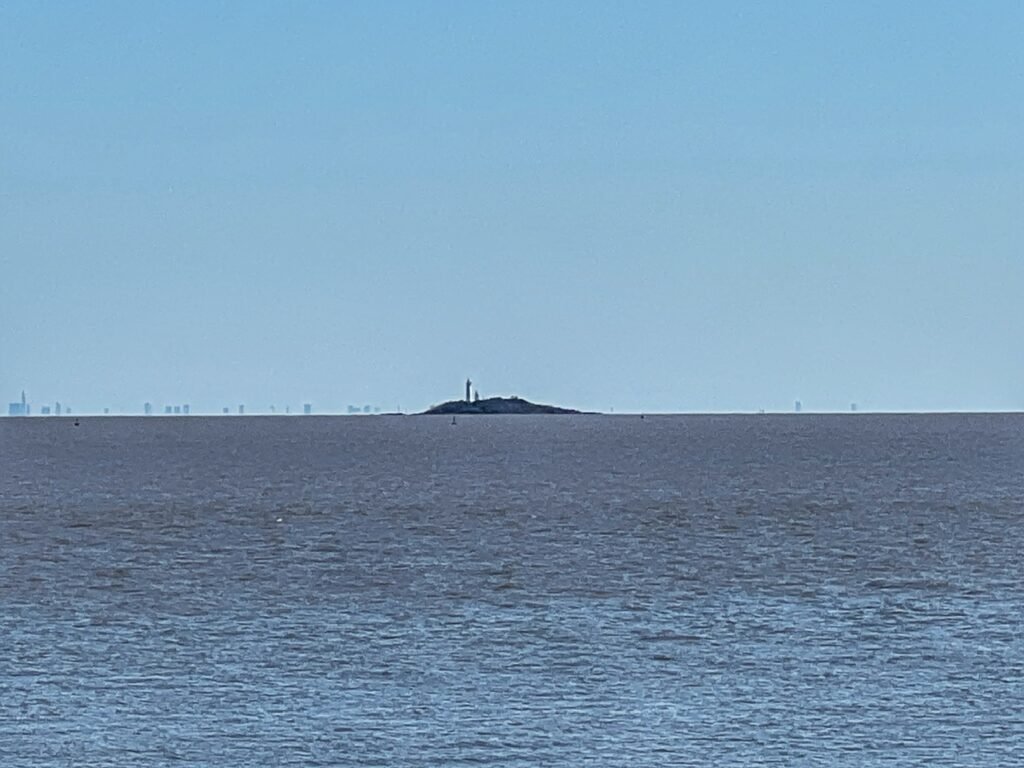
We arrived to Buenos Aires by crossing the Rio de la Plata from Colonia, Uruguay, which is commonly a day trip for people from Argentina. On the day we arrived Buenos Aires, 61 kilometers in the distance, could remarkably be seen on that clear day from Colonia.



The ferry tickets for the 1 hour and 15 minute ride were $35/each. Yikes! Another steep day! But what a fun way to arrive to a new country!
Our Accommodation
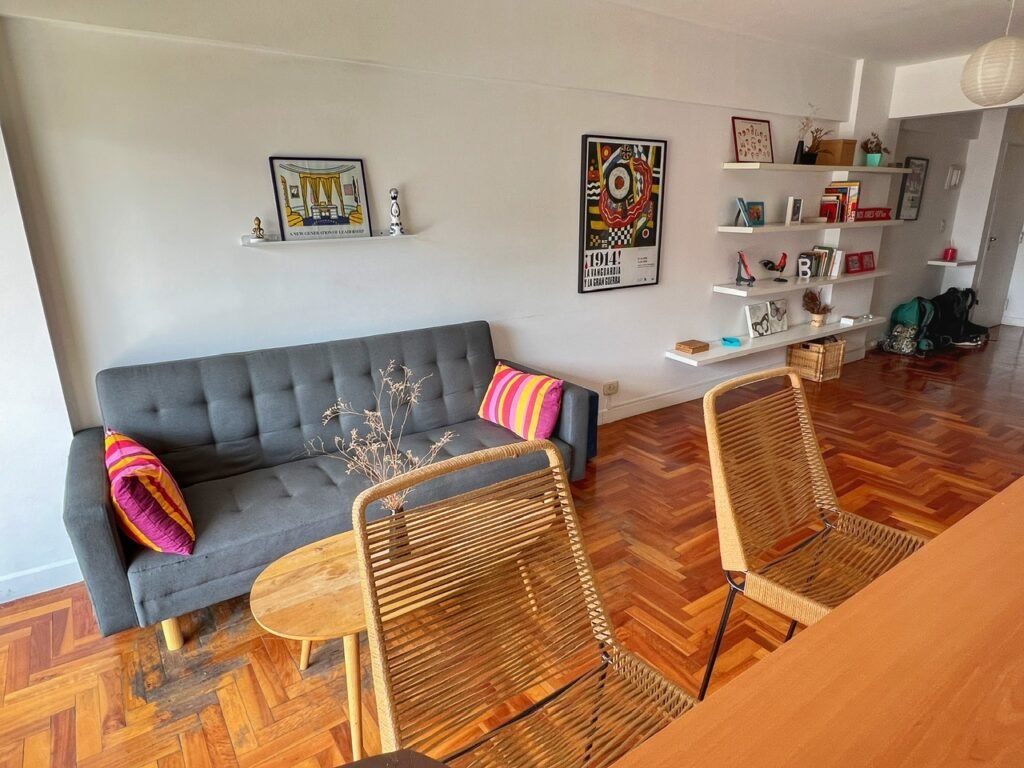
Getting short-term apartment rentals in Buenos Aires, or any other place in Argentina, is not quite as straightforward as other parts of the world. Argentina has had a tumultuous economic history (to put it mildly) which continues with a crippling inflation rate of 113% (September 2023). These times are heartbreakingly very difficult for the locals, whose paychecks are not keeping pace with inflation and lose their buying power from one week to another.
The complex nature of the economic situation here has led the government to introduce an unusual workaround to infuse more foreign currency into local markets. Simply put, Argentinian pesos come in two very different rates when exchanging currencies: an “official” and an “unofficial” blue dollar rate. Today these rates for USD:ARS are 1:350 and 1:730. The rate which is more than double the other… that’s the blue dollar rate. For those fortunate to have access to USD or Euros, they can take advantage of a doubling of their purchasing power for things like dining out, liquor and groceries, and service industry purchases like haircuts or mani pedis. But, as we are learning, prices for commodities (especially imported goods) are not following the same pricing scheme and online accommodation prices in particular have downright wacky pricing that don’t seem to follow realistic valuation.
A quick search of an Airbnb apartment for a week in Buenos Aires will show the average price to be about $300, that is the average for a week, taking into account that the average monthly salary in Argentina is about $200, that “average” apartment seems very pricey by local standards. Trying other booking engines yields the same results, by the way.
So, are tourists being ripped off by booking online? We thought so. We thought the issue of the price vs. reality was due to Airbnb charging us dollars, while paying the host the official rate converted into pesos. Which would make sense, for the host at least, since we assumed they valued the price of their units in dollars… at the official rate. So, we devised a plan, and booked a unit for a couple of days at the inflated online price hoping to then negotiate with the host, to get a more reasonable local rate using the dollar or blue dollar rates as leverage. This did not work in our case and the owner asked for virtually the same amount as advertised on Airbnb.
FYI, other options also led to closed doors. When we tried to work with locals directly, to get better value, they require a three month minimum stay, deposit, payment for utilities and/or proof of student or work status.
So, we stuck with Airbnb, but moved to a place that was priced more fairly that we love. But it’s still far from a bargain by Argentinian standards.
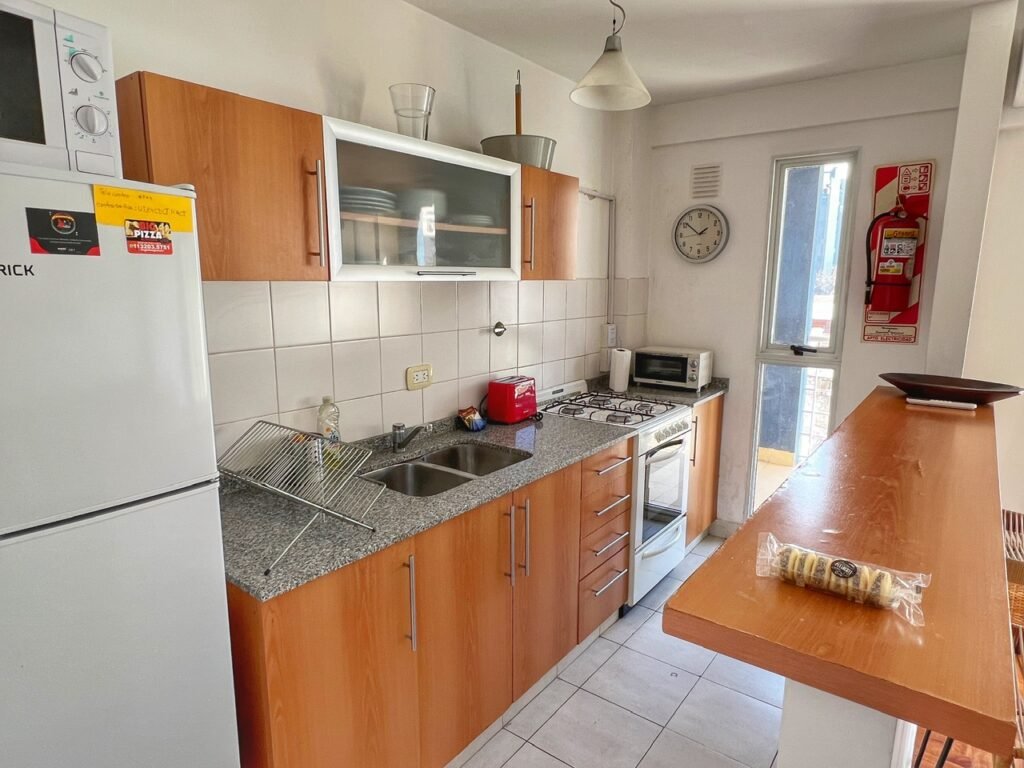


The apartment we ultimately chose for a month is in the Almagro neighborhood, near popular Palermo and had a fabulous Uruguayan host named Nomi. This fourth floor large studio unit had a cozy feeling of home and immediately reminded us of our apartment in Portland. It cost $630 for the month or $22/night which was well within our comfortable range.
It features a full kitchen with a large fridge and oven, which are luxuries we haven’t had in awhile, a giant and incredibly comfortable bed, and enough floor space that we can BOTH workout at the same time which is usually unheard of.
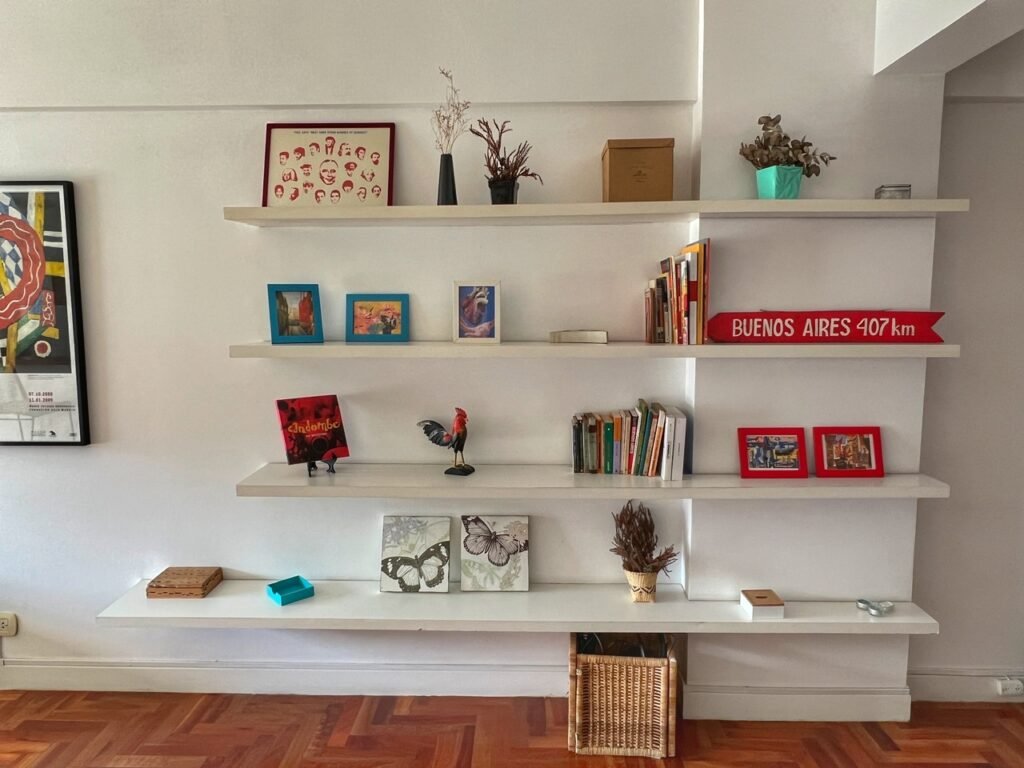

It also has lots of charming touches, and is the quietest city apartment we’ve stayed in Latin America.
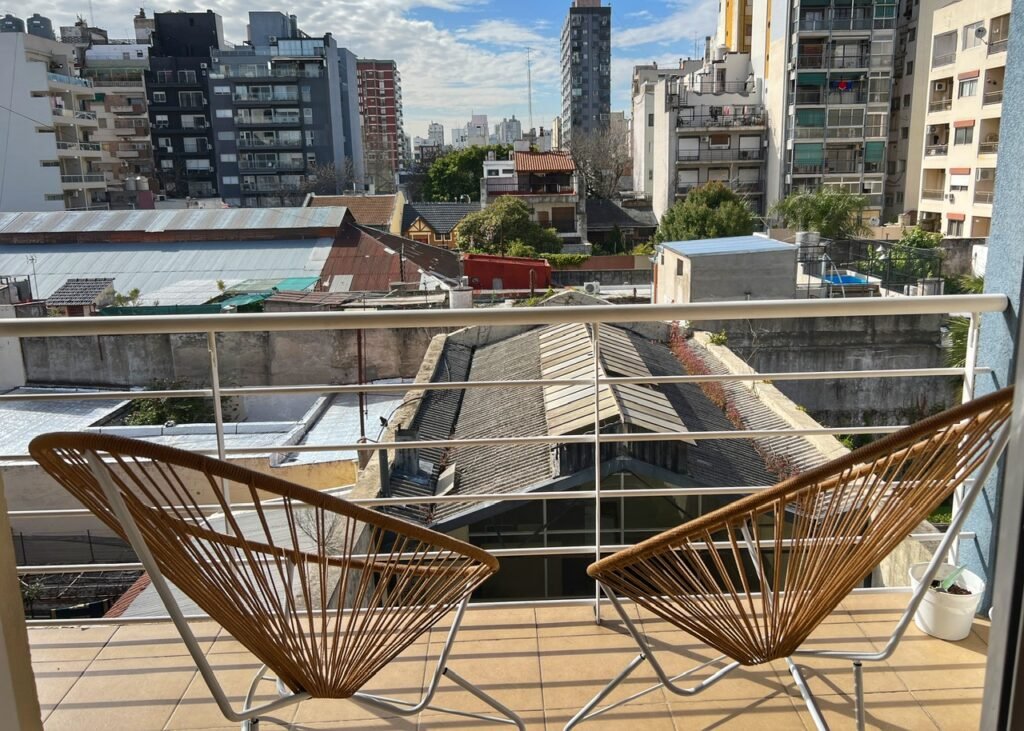
We also love the balcony, which gets luxurious morning sun, although it’s still a little chilly to fully enjoy.
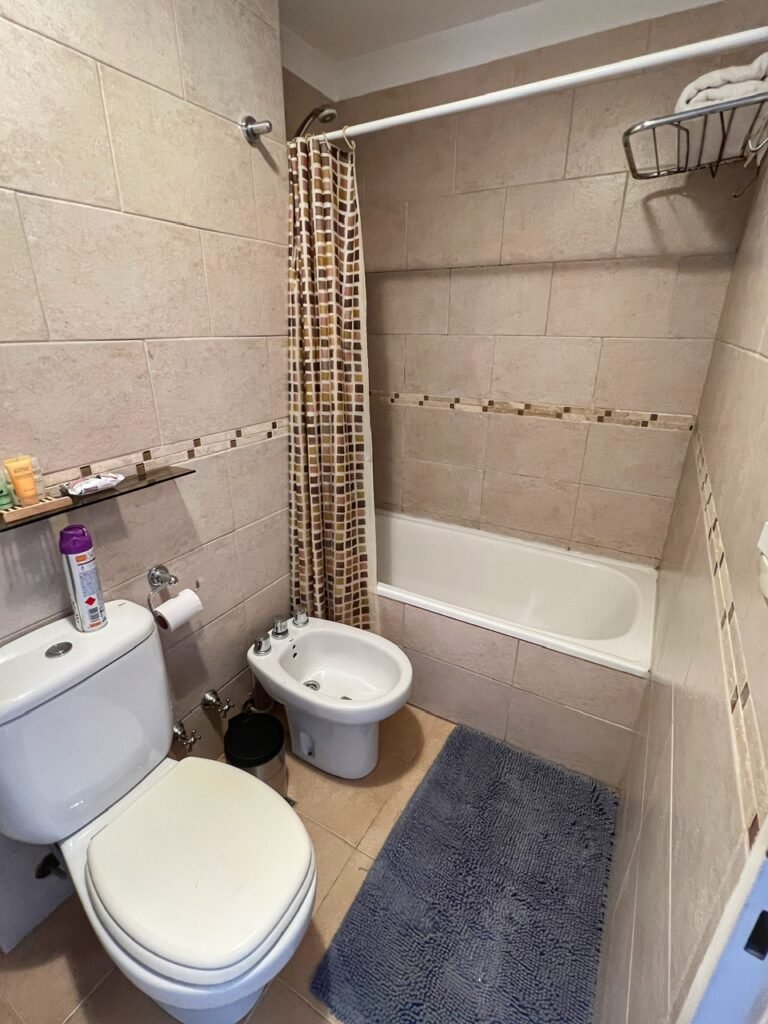
Other perks that come with Buenos Aires? The “Paris of the South” is stocked with bathtubs and bidets. Yay! How we’ve missed you 😁

Less lovely is this annoying plug, which seems to be anomaly in the exciting world of sockets. Fortunately cheap adaptors are readily available if your accommodation doesn’t provide (ours does.)
The street where we live


This is the unit we stayed in during our three days in Villa Crespo, which was $38/night. It’s still listed as available for the full month, so we have yet to understand why the owner wouldn’t honor a true negotiation with us but she didn’t. Although it was on the ninth floor, it was much louder.


But did have a super comfortable couch, and a really amazing sunset facing balcony. Ah well. We’re very happy with where we landed! ❤️
Life in Argentina…It’s complicated
As far as economies go, Argentina’s is a mess, and has been on shaky ground for decades. But, post-COVID it has gone from bad to worse. After 3 weeks here, this is our attempt at a few traveler’s Cliff Notes to better understand the reality of the situation (as of September 2023):
- Argentina is currently sitting at an astounding inflation level of 124.4%. When we arrived 3 weeks ago it was 114%. This is certainly high, but far from the highest ever recorded in Argentina. Still, inflation at these levels causes prices for goods to fluctuate daily. For Argentines living with such insane devaluation of their currency has made saving money extremely difficult and as a further handicap, the government only allows citizens to buy $200 USD per month.
- How did Argentina get here? The current situation has evoked after decades of mismanagement of public funds, rampant high-level corruption, debt and loan defaults, and short-lived ineffective fiscal restraint policies… all of which have culminated into the current crisis which shows no sign of abating.
- Argentinian pesos (bizarrely) can be exchanged in two rates to USD: an “official” rate (1:350) and a “blue” dollar rate (1:725) to pesos. (Más o menos) Foreigners, or anyone with foreign currency (not only USD), can buy pesos at the heavily “discounted” blue dollar rate. These plural currency exchanges were “covertly” instituted by the central bank as a method of infusing foreign currencies into the economy so as to accumulate foreign currency reserves.
- the dual currency exchange translates to a doubling of pesos using the blue dollar rate, while concurrently reducing shelf prices for goods by about 50%. However, it is worth noting, locals unfairly do not get the blue dollar rate so while the non-resident may be getting things at half off, the locals are paying double.
- Understandably, this blue dollar rate has made the cost of goods quite inequitable, and should be treated as a sensitive subject when speaking with locals about buying things. While this price inequity is good for the traveler, it can be salt in the wound for a local. In this context, it’s important to refrain from using the word “cheap” around locals as it can be insensitive to them.
- Presidential elections are in October, and the economy is front and center, unfortunately the locals we’ve talked to aren’t at all optimistic that things will improve.
- Keep in mind, Argentina is the 2nd biggest economy in South America, right behind Brazil, and is a fully developed country with a good standard of living and modern conveniences. They just happen to have terrible economics. They have been living in a state of one step forward, three steps back for decades. In other words, they may be playing catch up for a long time to come.
- Also, it’s important to add that, despite all this, we’ve had nothing but wonderful interactions with locals.

The best example were shown was by a local who lived in the city her whole life. She said that when the $1000 peso note (the former highest note) was released in 2017, it was valued at $53 USD. In September 2023, the same note was worth $1.50 USD. By the time we returned in November 2023, it was worth $1.10. Therefore, when you exchange even $100 USD for pesos, you will undoubtedly receive a brick of cash. As of July 2023, there is now a $2000 peso note, but we never received one during our time in Argentina..
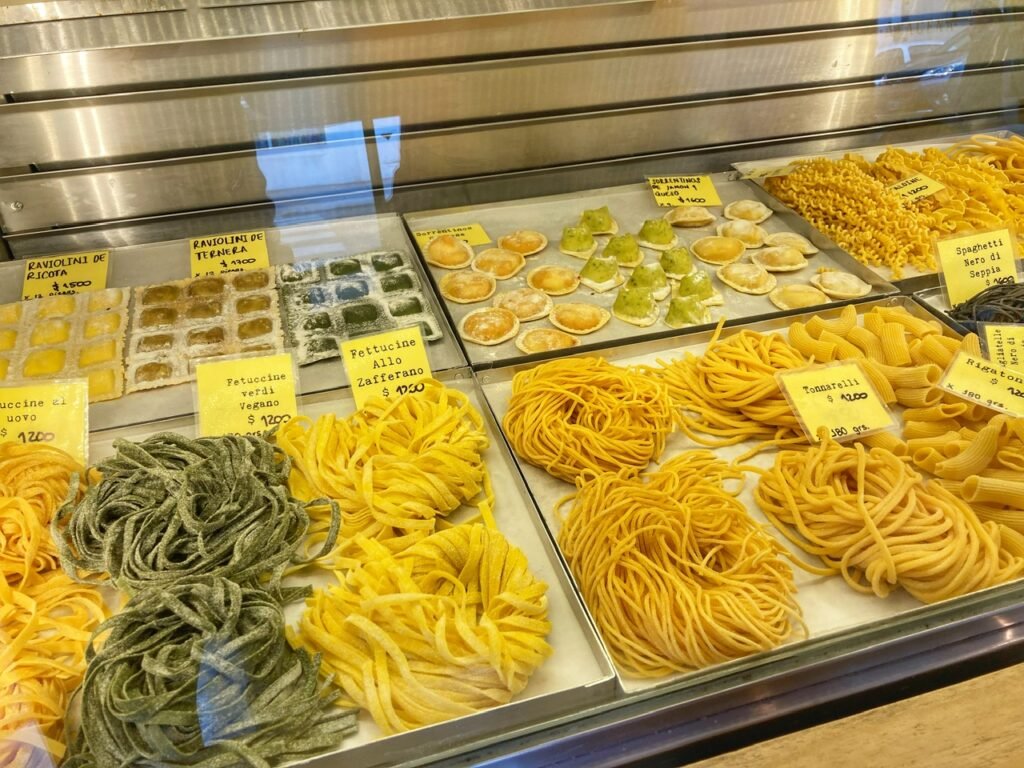
So…a few examples of how this translates in USD….you can get amazing hand-made pasta at multiple shops for $1.50, thanks to the amazing Italian influence.

We stood in utter shock in the grocery aisle for at least five minutes when we saw the wine aisle. Every single bottle of high-class wine, mostly from Mendoza, was in our budget and cost $1-5. And after only a few weeks, we can say every bottle we tried has been delicious.

A wide selection of temperate fruits and vegetables. We indulged on so many blueberries and strawberries during our stay. You could get a half pint of blueberries for $.50 and 1/2 kilo of strawberries, confusingly called frutillas, not fresas here for about the same.
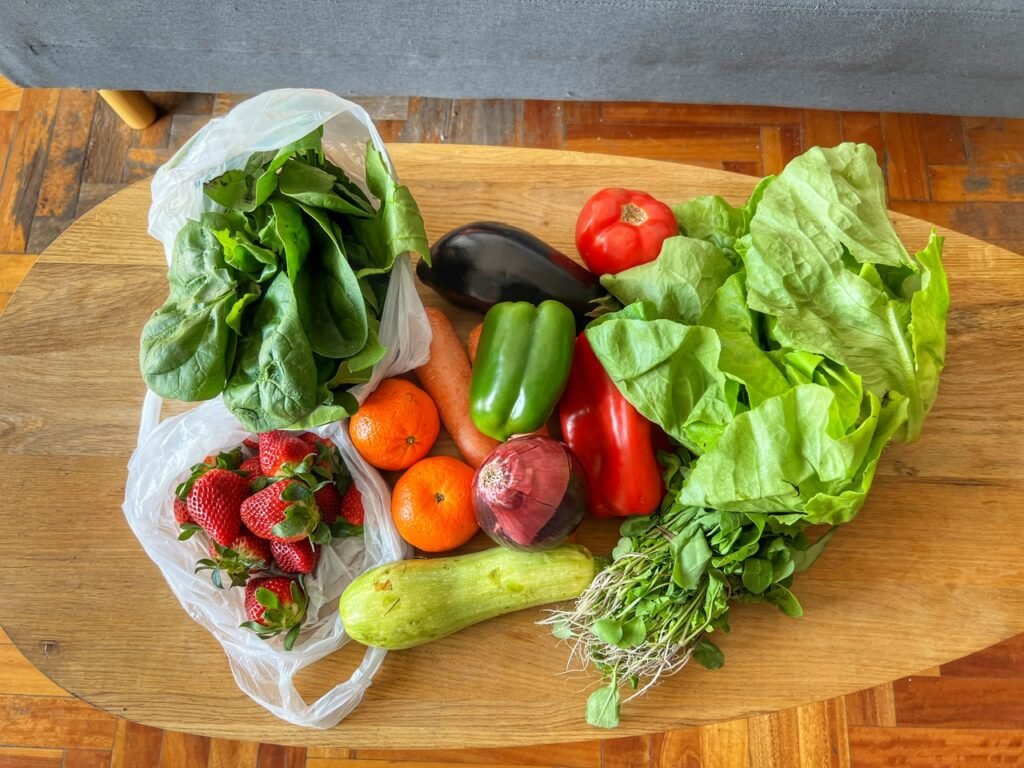
This particular market load was $3.56.

Blue cheese at the grocery store. $.71. We tried to shop at Coto which seemed to be the best and most economical. They also run discounts about once a week where they offer you 15% for using any credit card. You have to watch the ads for what day this is.

Package of hand made queso stuffed raviolis from supermarket… $1.05
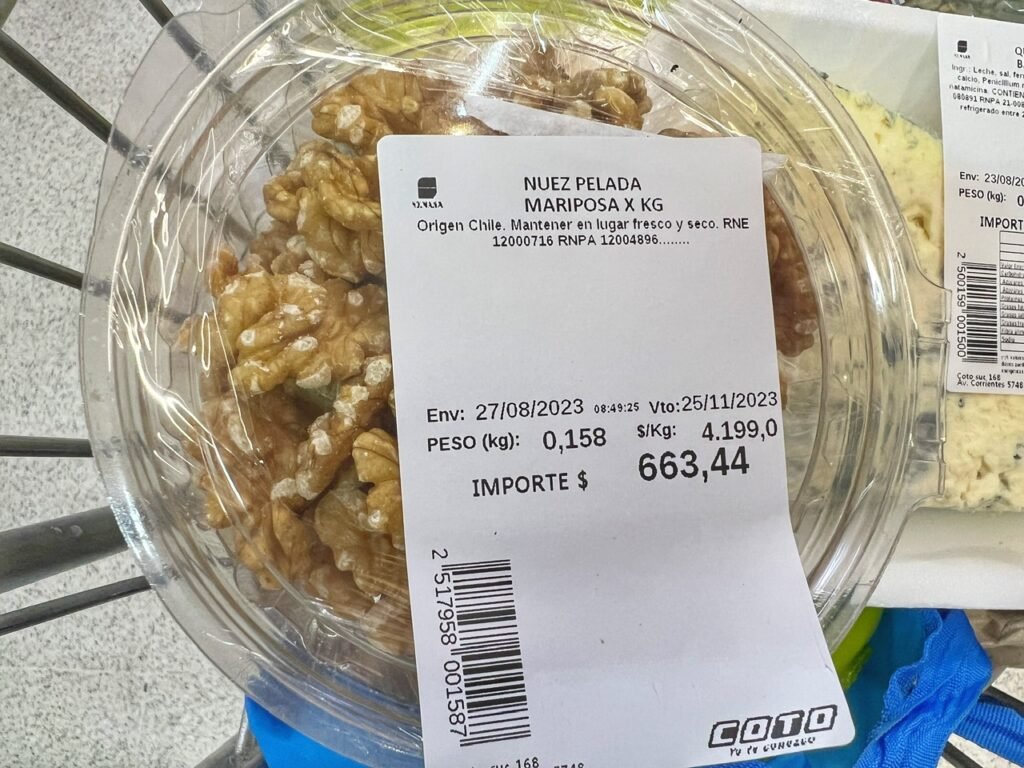

Package of walnuts…$.95 and Starbucks coffee…$3.48
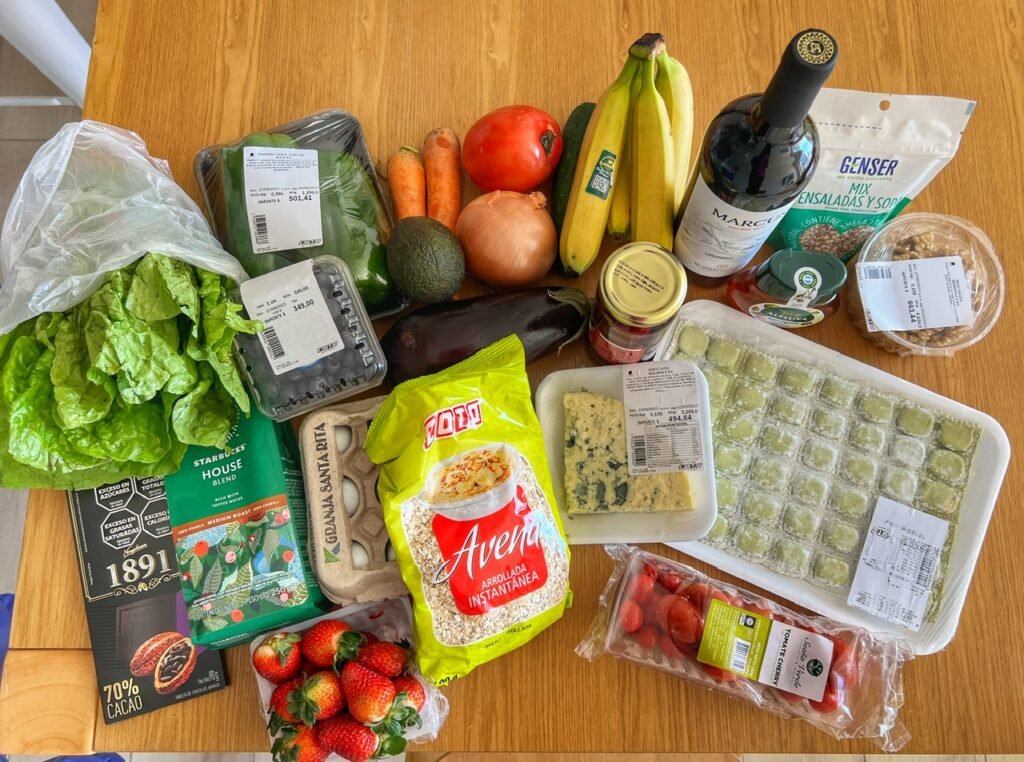
An entire load…$21.40, from Coto supermarket.

We knew wine would be affordable, but were shocked to find supermarket craft beer to also be a tremendous value. About $.90-$1.10/large can.

Or, if your poison is more spirit-based, a whole bottle of vodka for $2.67.

You can imagine, it’s really difficult to restrain yourself here. We are also constantly rubbernecking pastry shops. Everything is high quality and absolutely delicious, including a whole cake for $4-10.

Or a shareable little guy for $2.


Load of laundry, washed, dried and folded. $1.50, and a stir fry dream…no chopping required. About $.70.
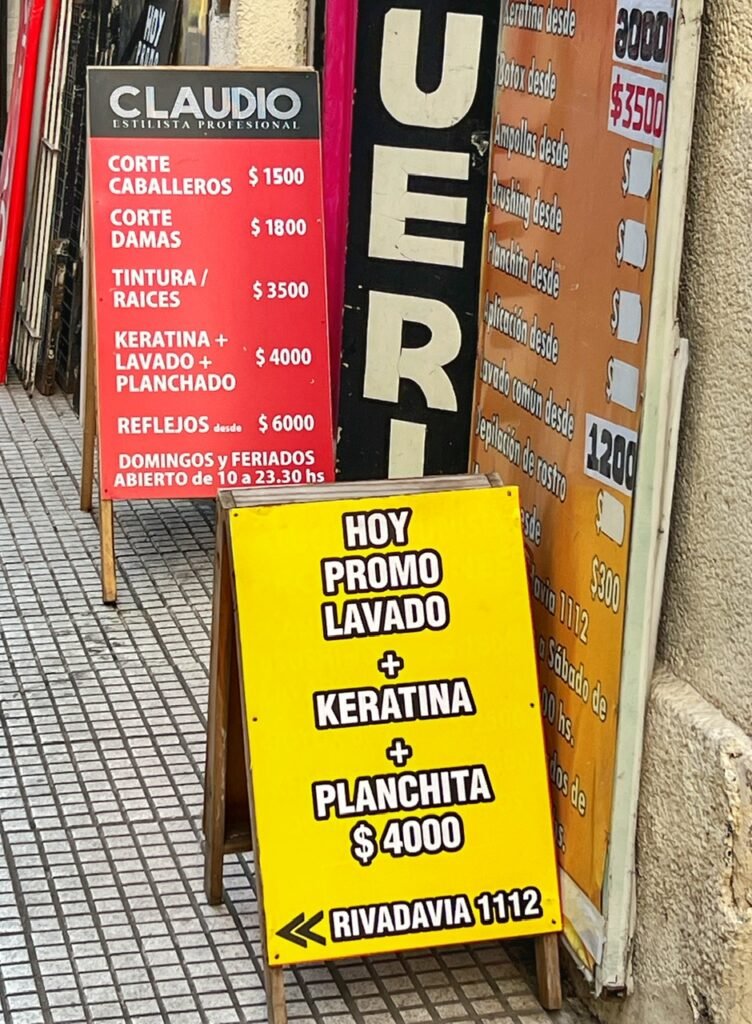
Haircut women’s: $2.57, men’s $2.14
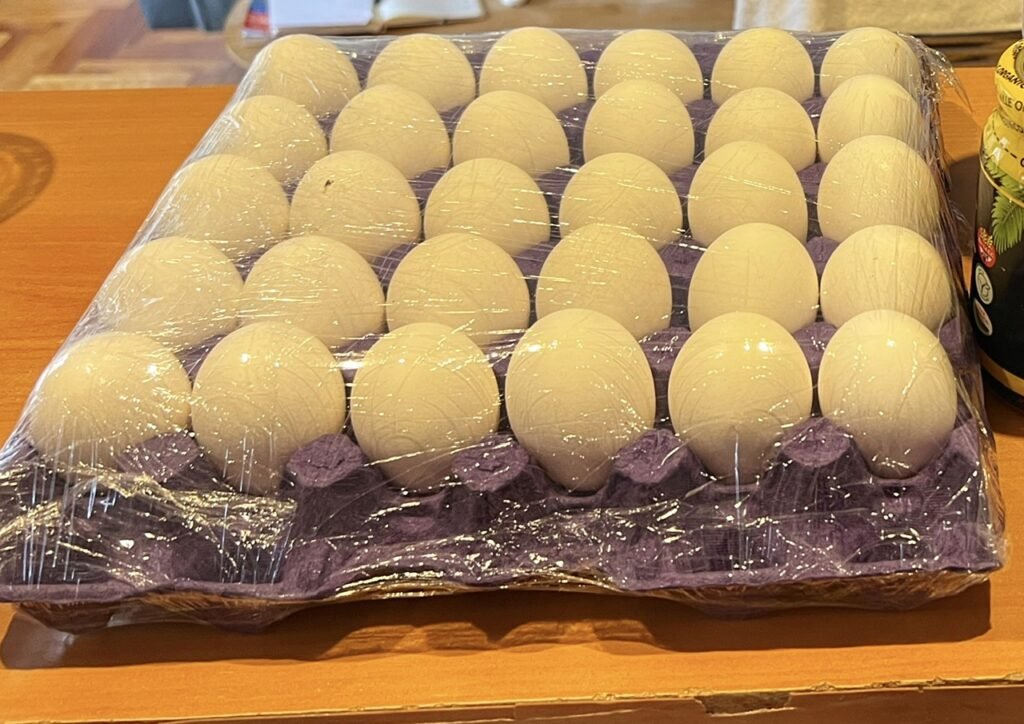
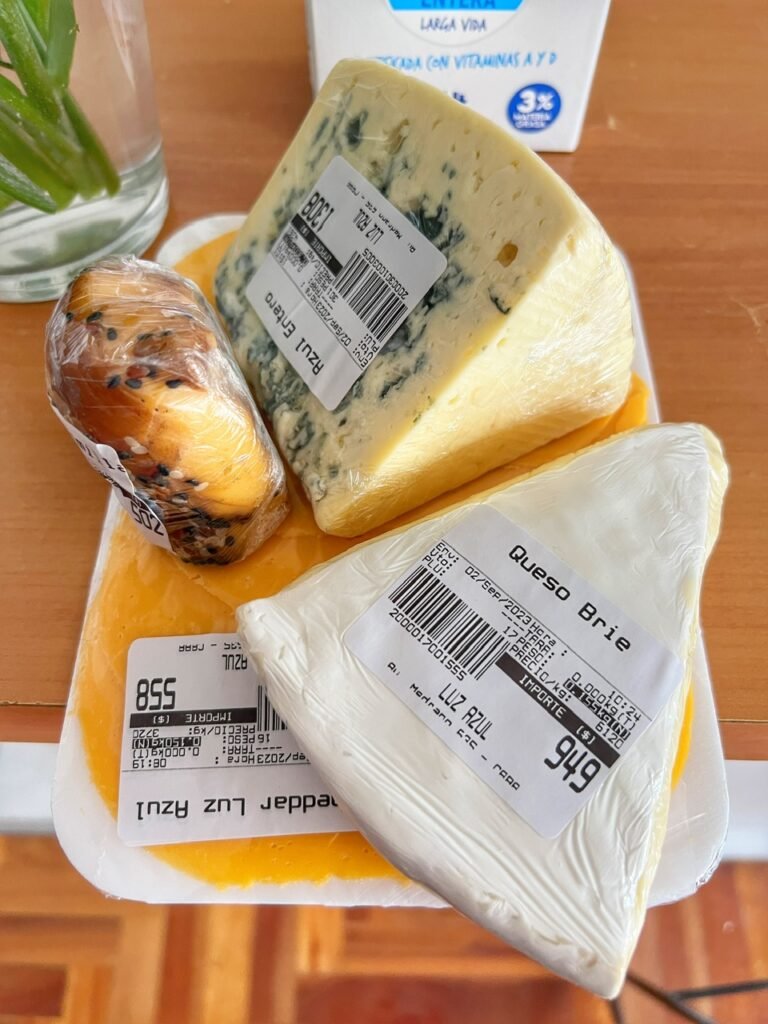
30 eggs: $3.80 and a pile of high quality cheese: $5.12

Two craft beers during happy hour at a brewery: $2.57 (buy one get one)

A light breakfast at Starbucks and coffee: $2


Sensodyne toothpaste: $1.65 and Greg’s thyroid pills: $6/box, usually ~$20-25/box

Dinner at a traditional Argentinian restaurant including two entrees and a bottle of wine. $11.

A ride on the metro, bus or train is about $.11. By far the most economical public transport we’ve experienced.

Clothes and imported goods are a different story…they are very expensive, especially for locals. Despite the businesses trying to offer payment plans, called cuotas, nearly every shop seems empty. Also, we’ve noticed that unlike in other big cities, people are not dressed that poshly. You see a lot of worn and second hand looking items everywhere you go. In that regard, in our backpacker threads, we fit right in! 🙂
Exploring Palermo & Beyond

When first deciding to spend a month in this massive city of 15 million, it was a bit overwhelming to decide which neighborhood to park ourselves in. But we couldn’t have been happier with the quiet and safe nature of Almagro with its easy walking proximity to Retiro, Caballito, Villa Crespo and the three Palermos, as well as being incredibly well connected by public transport to the center. Below follows some photos of our explorations in these neighborhoods.

Like the B metro line, the city buses often have an air of unique nostalgia.

A regular site in Buenos Aires is the sight of the local dog walkers. We saw some of these guys juggling up to fifteen canines. That is some serious talent!!

We wondered how this many dogs could be contained while the walker goes in to fetch his next client. Apparently this is how.
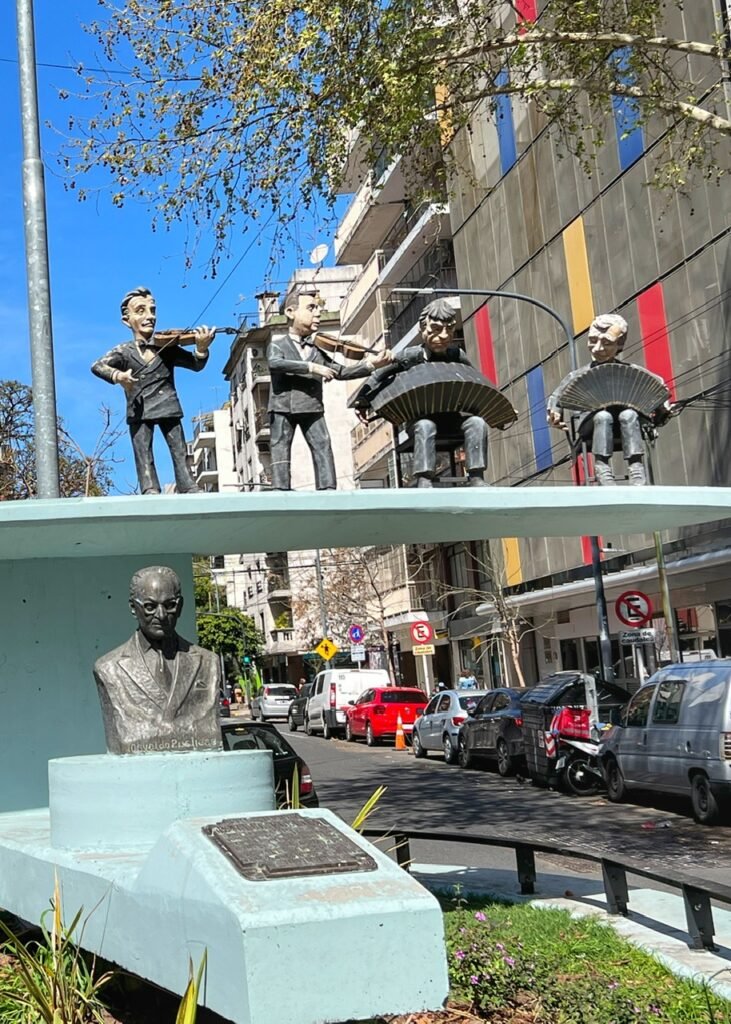
In a combination of stoic and cartoony images, the Plazoleta Osvaldo Pugliese in Villa Crespo honors a great musician who lived in the neighborhood.

An official Palermo sign that looks like it dropped out of Southern California. Palermo is known as a safe and favorite district of many longer term travelers or expats and has an active nightlife.


Some of its storefronts are very eclectic like this hair salon or this bookstore.
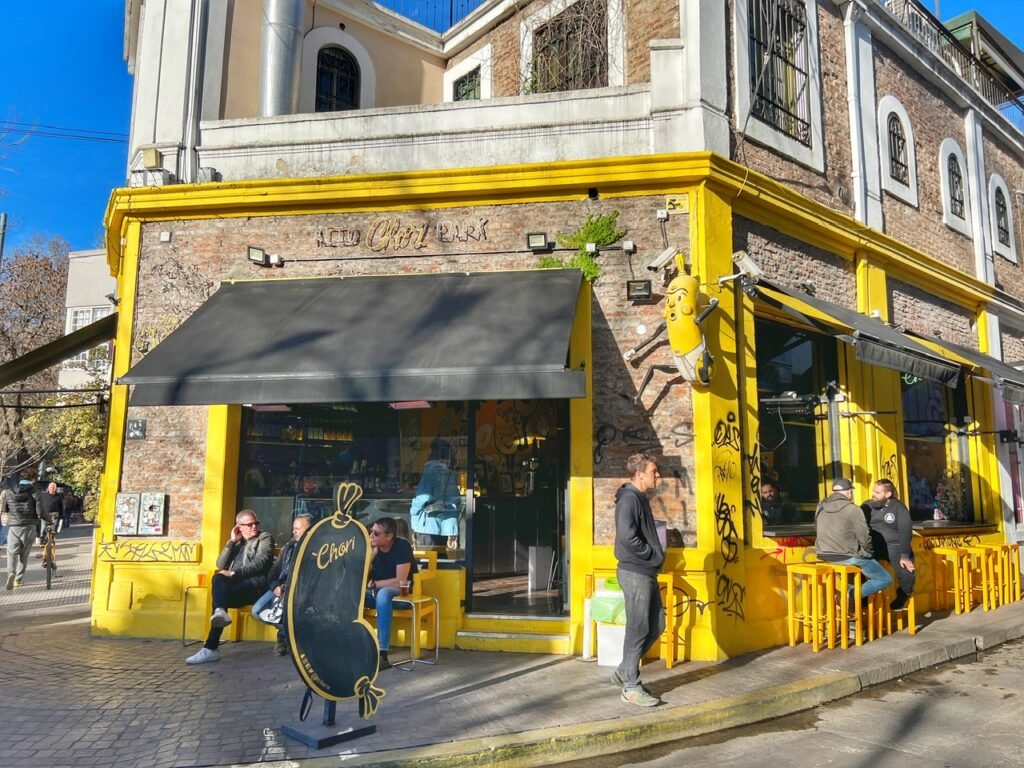
Looks like a sausage fest

But there’s also lots of options for vegetarians and vegans including this “hamburger” joint which more resembles a strip club in both font and color choice.


However, what we continued to find most charming, were the corner cafes, which were just irresistible.

And since you’re walking a lot, it’s always nice to have a cushy place to take a load off. Ahhh…wait. Looks are a bit deceiving. 🤣
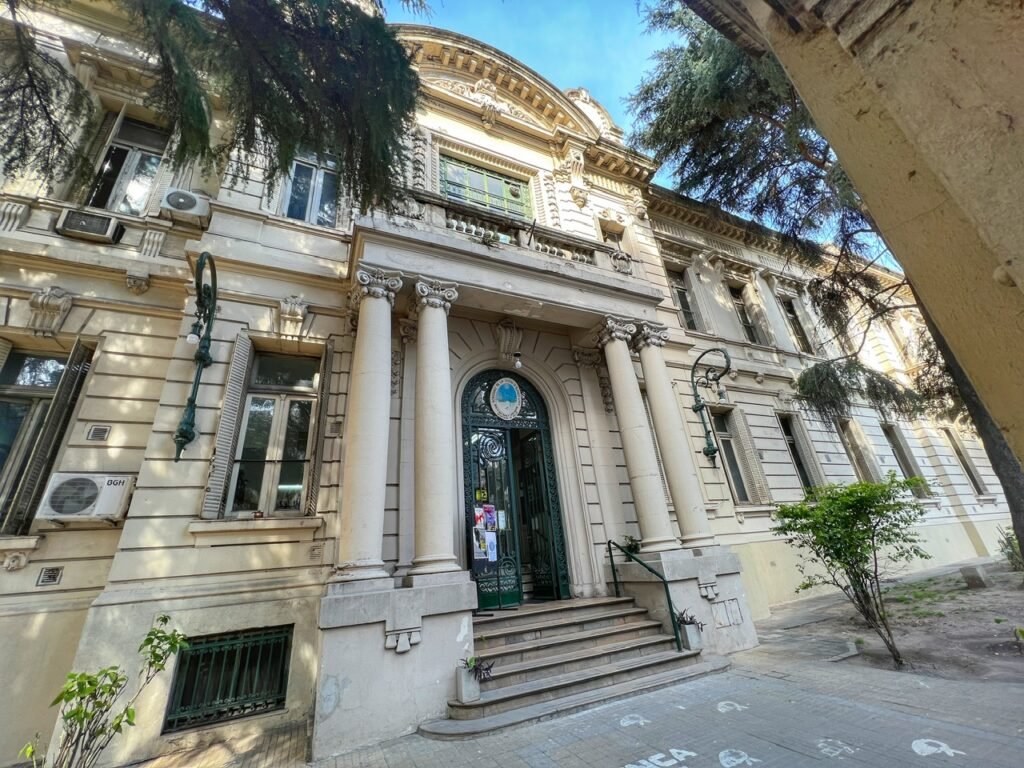
A mental health center. Interestingly, Argentina has the highest number of psychologists per capita in the world, with around 198 psychologists per 100,000 inhabitants, an estimated 46% of whom are in Buenos Aires. Since Argentinian culture sees therapy as important to self-development and positive health, there’s plenty of demand to meet that supply. (Quartz/com). This could very well be why many Argentinians have handled their economic situation with such resilience and tenacity.

Check out the headdress on this edifice!
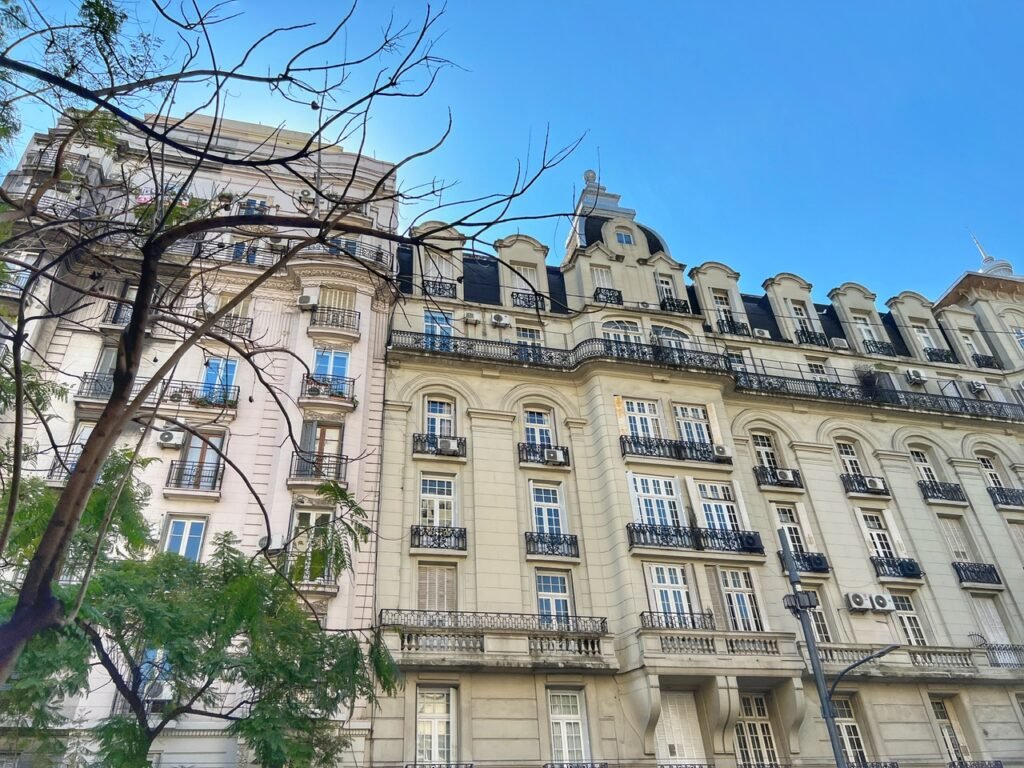
The buildings in Retiro feel so undeniably French, as do many places in the “Paris of South America.”

Plaza Lavalle, one of many palm-studded and sweeping plazas throughout the city.
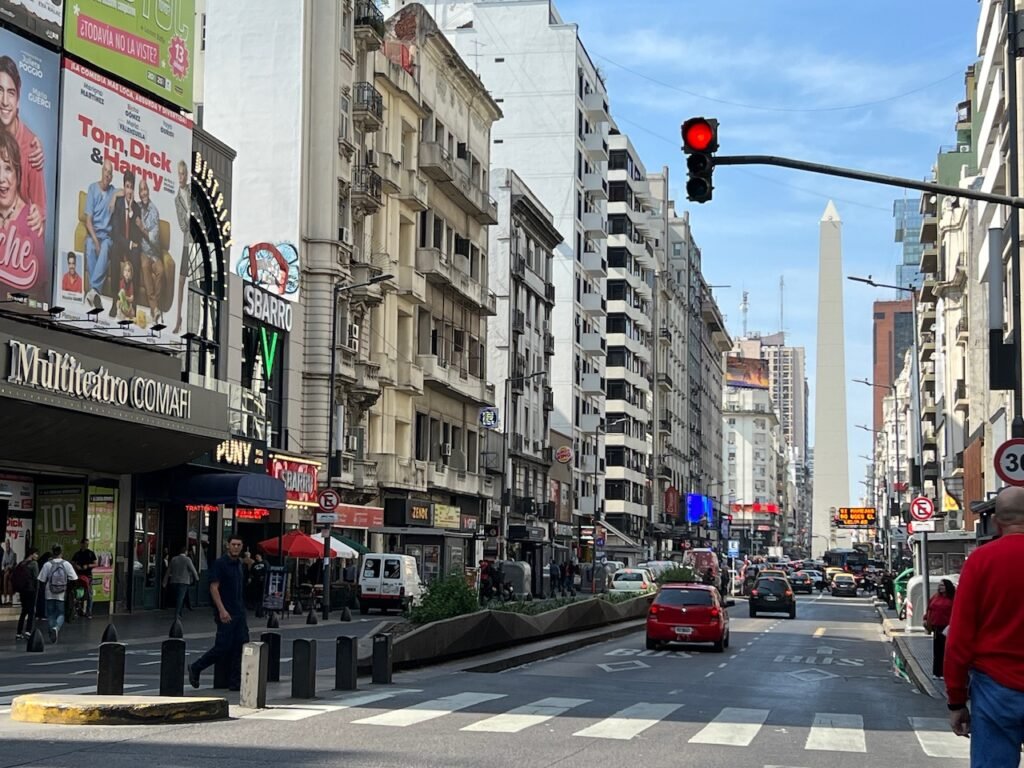
San Nicholas neighborhood looking toward the obelisk.
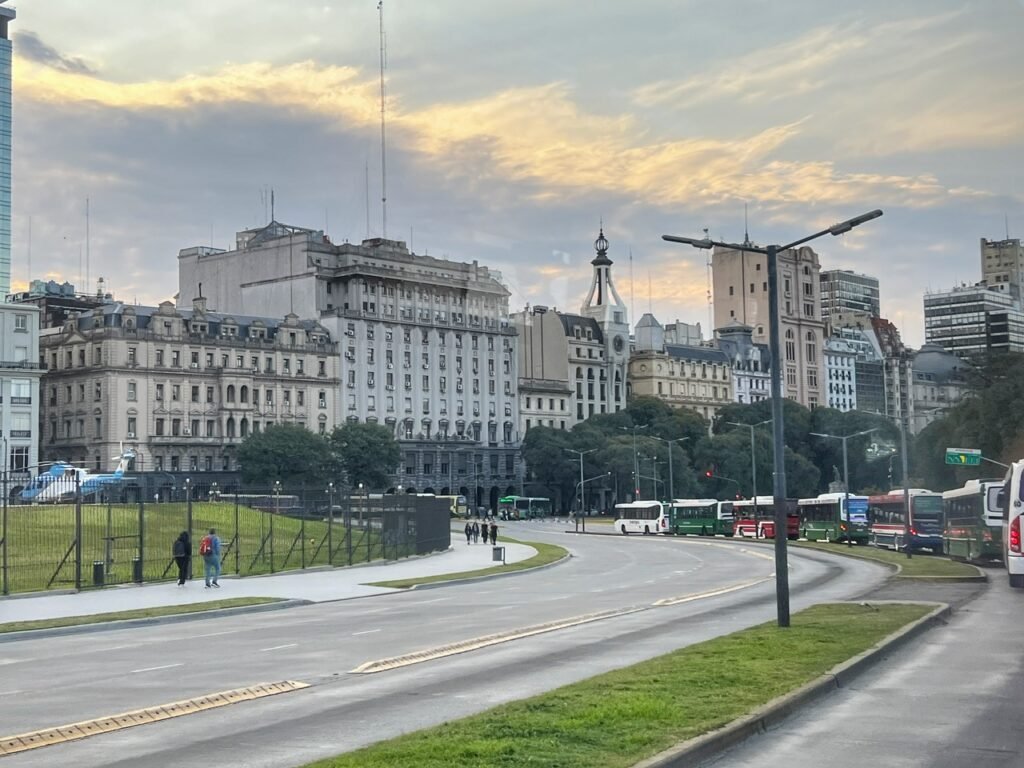
A grand boulevard in Monserrat.
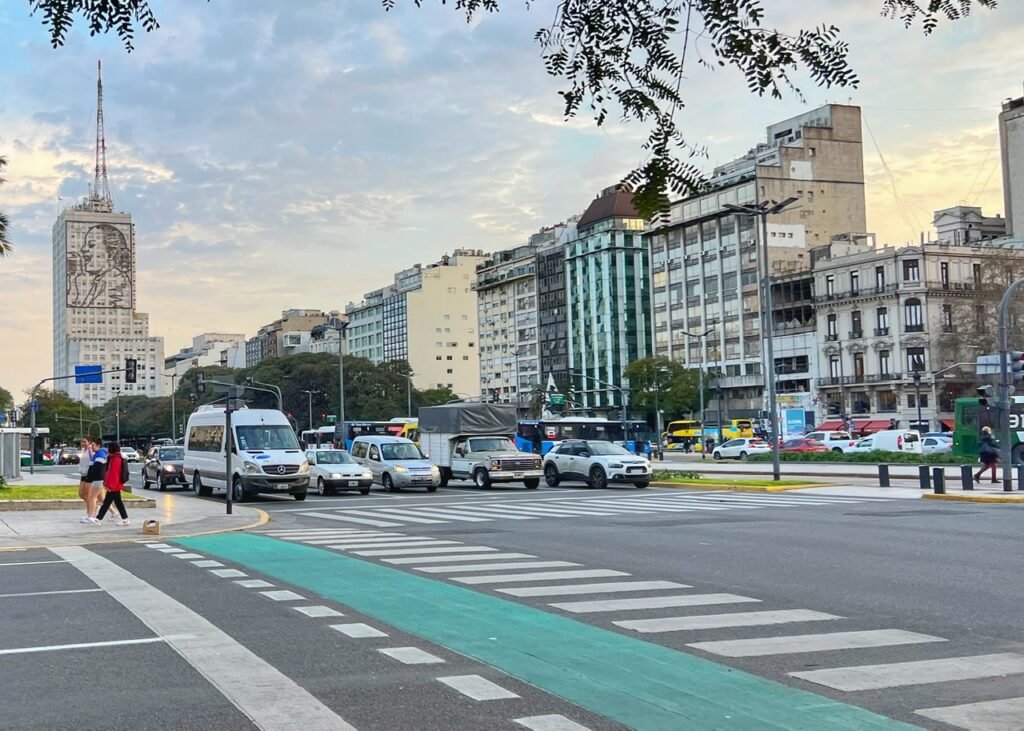
Many short-term tourists stay near this area.
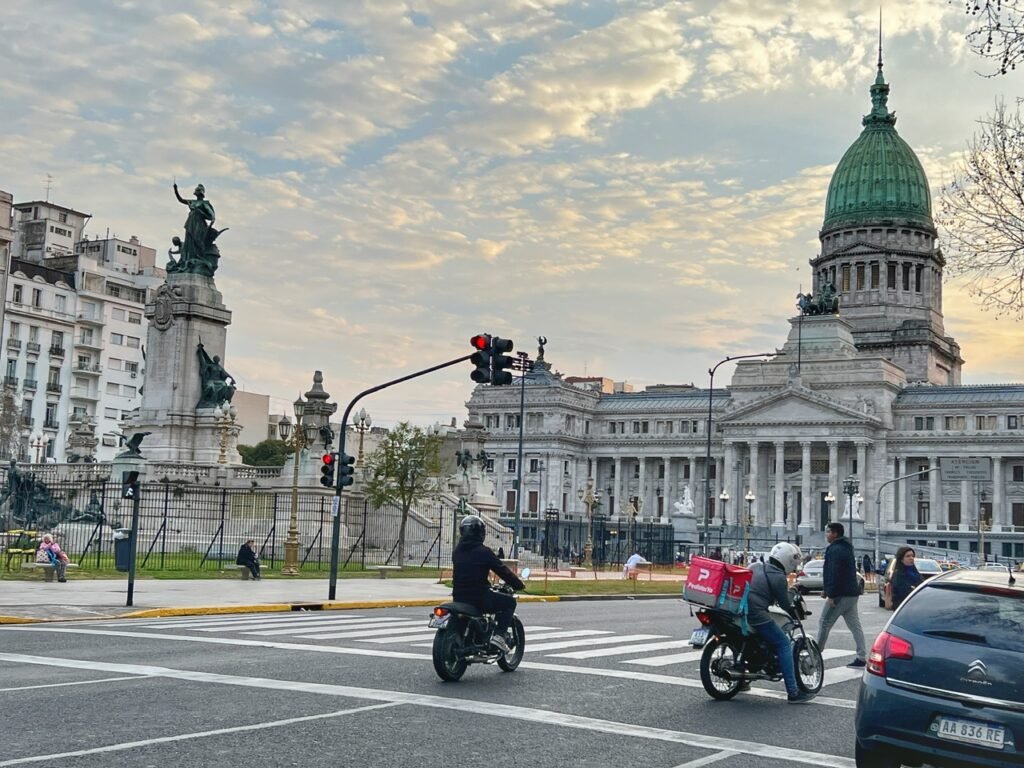
The Argentine congress building.

Parque Centenario, where massive groups of locals sell their personal belongings in giant yard sales every weekend.

Funky bars in Palermo.

More murals of Messi.
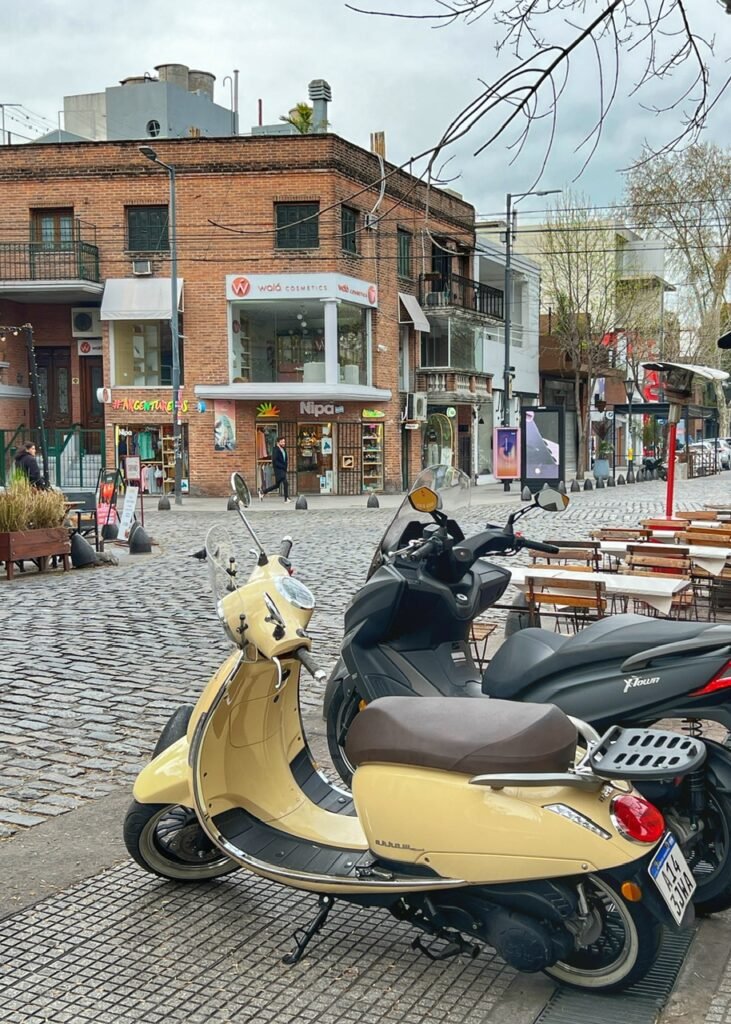
Cobbled streets of Palermo. We were surprised to not see more Vespas scooting around considering the European influence here.

Other immigrants with quite a trademark in Buenos Aires included the Armenians, who have even plopped down their own churches and bakeries.
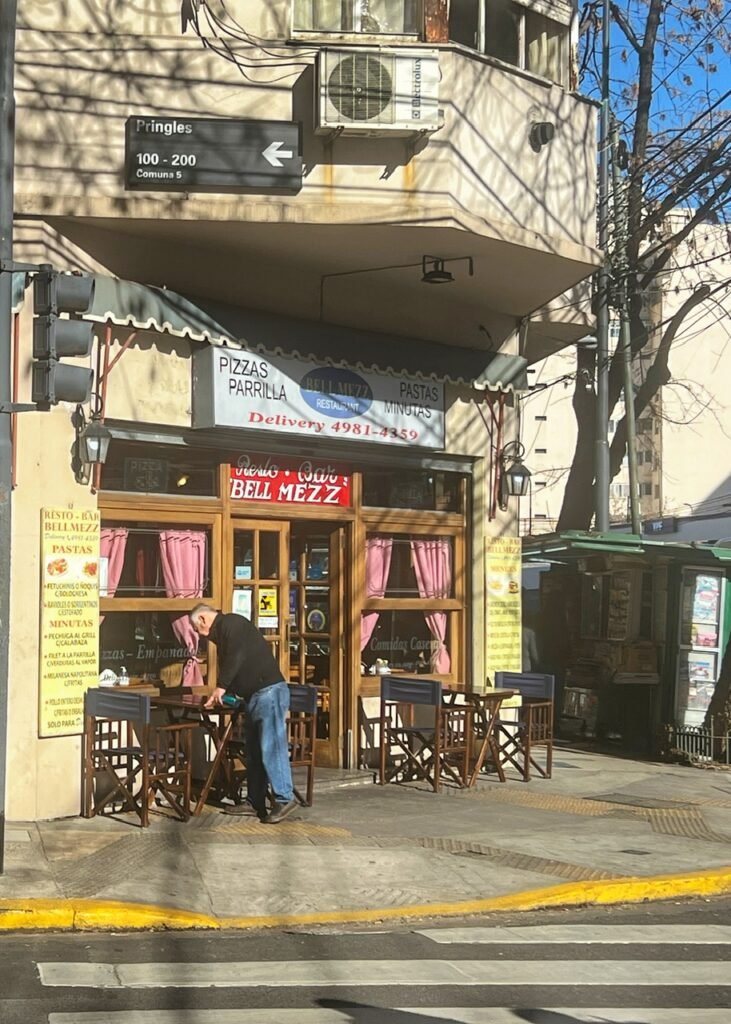
And an endless array of pizza shops!!

Parque Rivadavia, where large groups of locals meet for yoga every Friday morning.

This park also holds a fantastic second hand book section. Since Mandy started reading Spanish books, it was pretty tempting not to buy the vintage kind you can turn pages in, but the tablet would have to continue a little bit longer.

The captivating streets of Palermo.


The House of Mario Palanti, one of the great Italian architects of early Buenos Aires and Montevideo. He was also the designer of Rome’s tallest skyscraper that never was during the time of Mussolini.

Mandy met up with two traveling gals from the Facebook group, Host a Sister…Giovanna on the left from Brazil and Rita from Serbia. They had lots of curious questions about how we’re living this life!
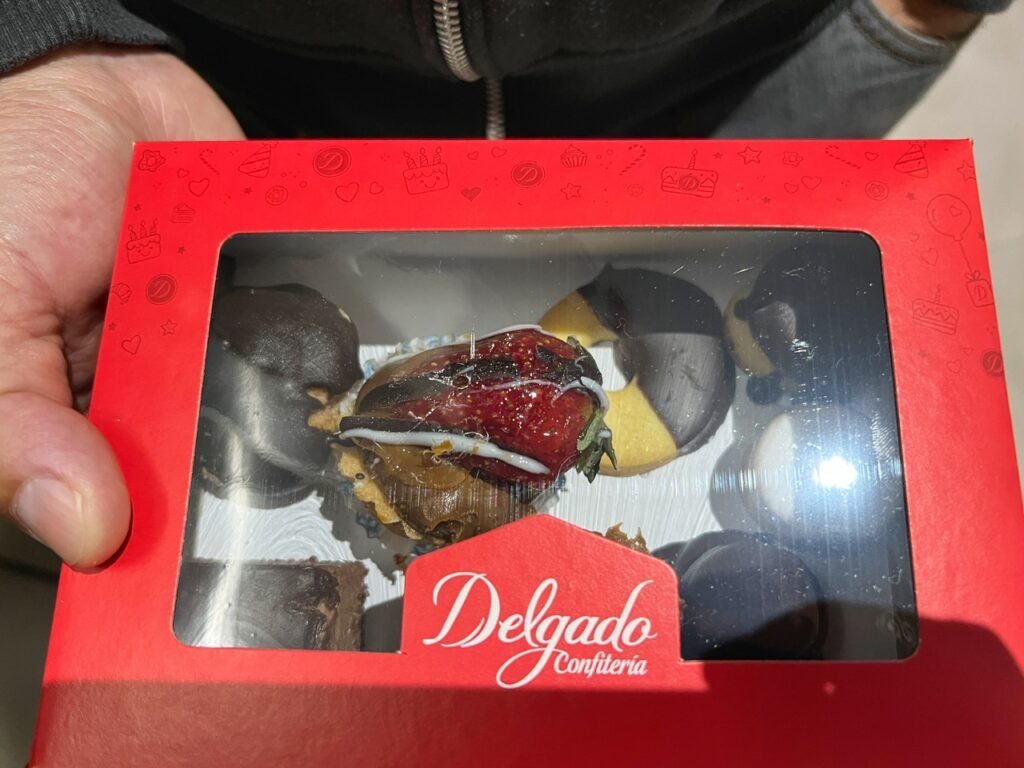
If you know Spanish, you’ll understand why the name of this bakery is ironic.

The “Antigua Farmacia del Aguila” was founded on June 14, 1895, on Av. Corrientes 4996 in Villa Crespo and remarkably still acts as a pharmacy today. It had so much character!

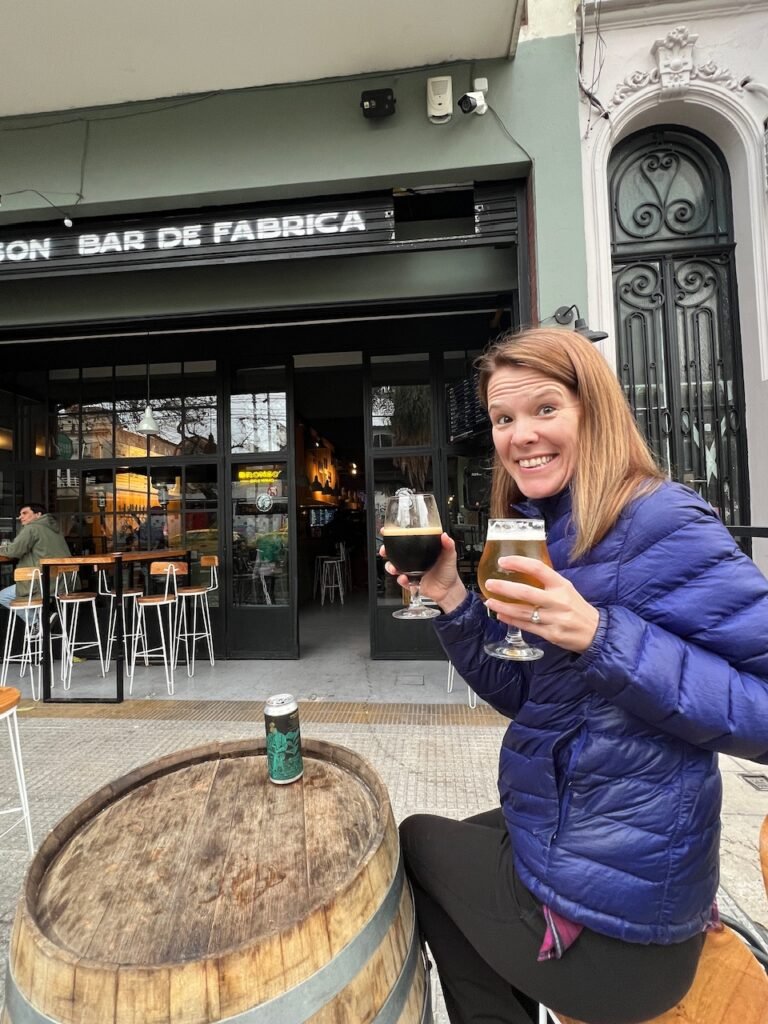
Grabbing our last craft pints as temporary Porteños at Bronson Brewing. You can see that the majority of the offerings are IPAs. Not our fav, but interesting. Happy hour indeed! Three craft pints cost about $4.50! And it was good to see, plenty of locals were still out drinking as well!

Have we mentioned how much we LOVE empanadas in Argentina?! Unlike the ones in northern South America, they are baked not fried and “seem” so much healthier!! (At least this is what we tell ourselves!)
Exploring Belgrano & Barrio Chino

Because we were in Buenos Aires for a month, we stacked our time with several doctor’s appointments. For one of them, we headed to the Belgrano neighborhood so it seemed like a perfect time to check it out. Belgrano is a neighborhood usually off the radar for most tourists. It comprises of several upscale residential enclaves, a bustling shopping street of which most stores seem to be sitting empty, and our favorite, a lively Chinatown which beckons with specialty supermarkets, street-food stalls and noodle joints.
This barrio seems to feature not just Chinese establishments, but from one street to the next encompasses all things Asian with obvious nods to Japan and Korea as well. As in many neighborhoods like this around the world, you are welcomed to the area with a striking Chinatown gate.

Japanese-inspired street art next to, what else? A cat cafe.

The friendly pedestrian streets wind throughout the area.

A sushi and sake bar. Rolls currently start at $2.85 (blue dollar)

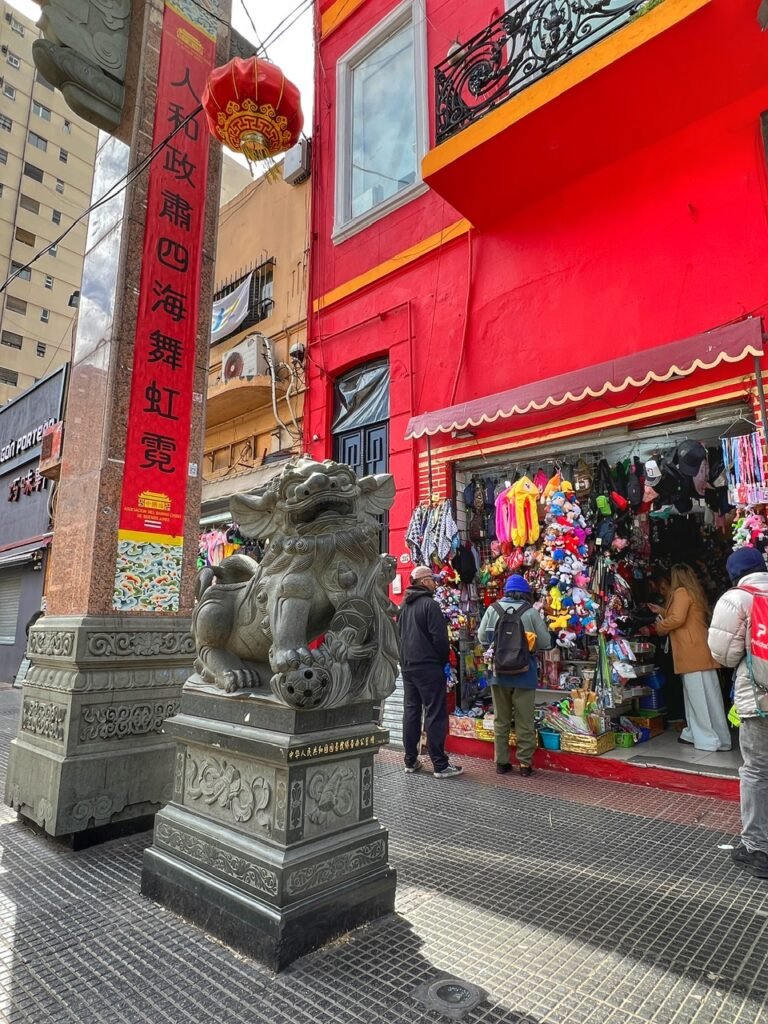
Another view of the gate. We have to admit, being here made us very excited to get back to Asia!

A coffee bar with a giant blue drop waiter.


It was such a fun area to wander! And even included pretty little residential rows.

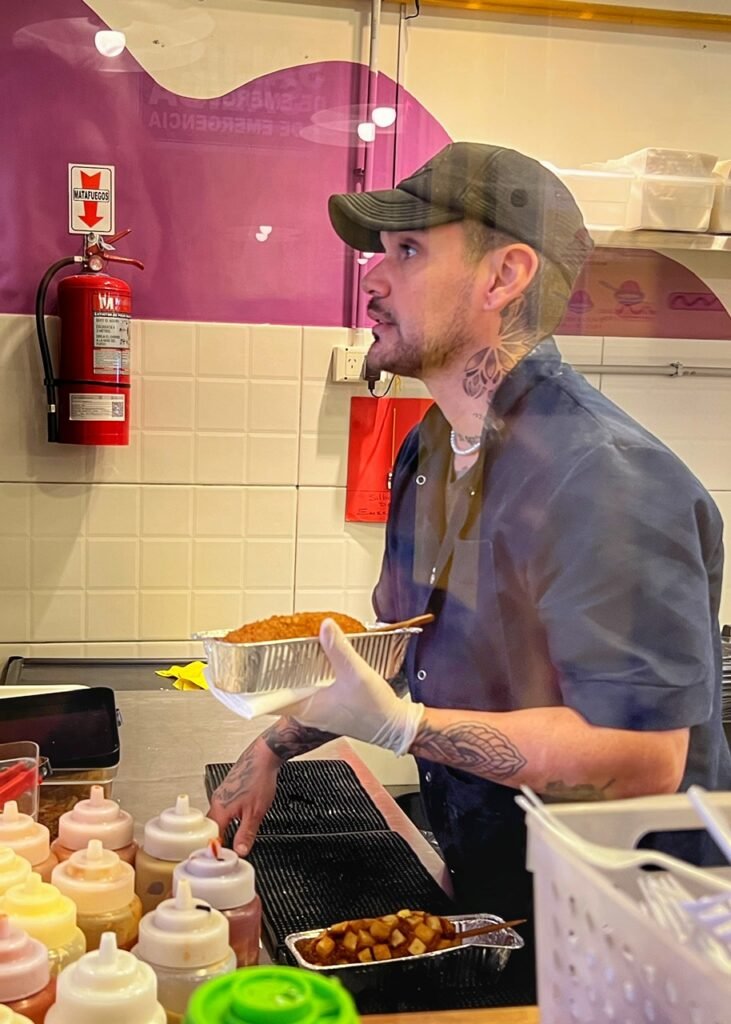
Bubble tea abounded! And so did these. Giant breaded Korean hot dogs on sticks (aka corn dogs in American-ese) and loaded with Asian friendly toppings like Kim-chi.
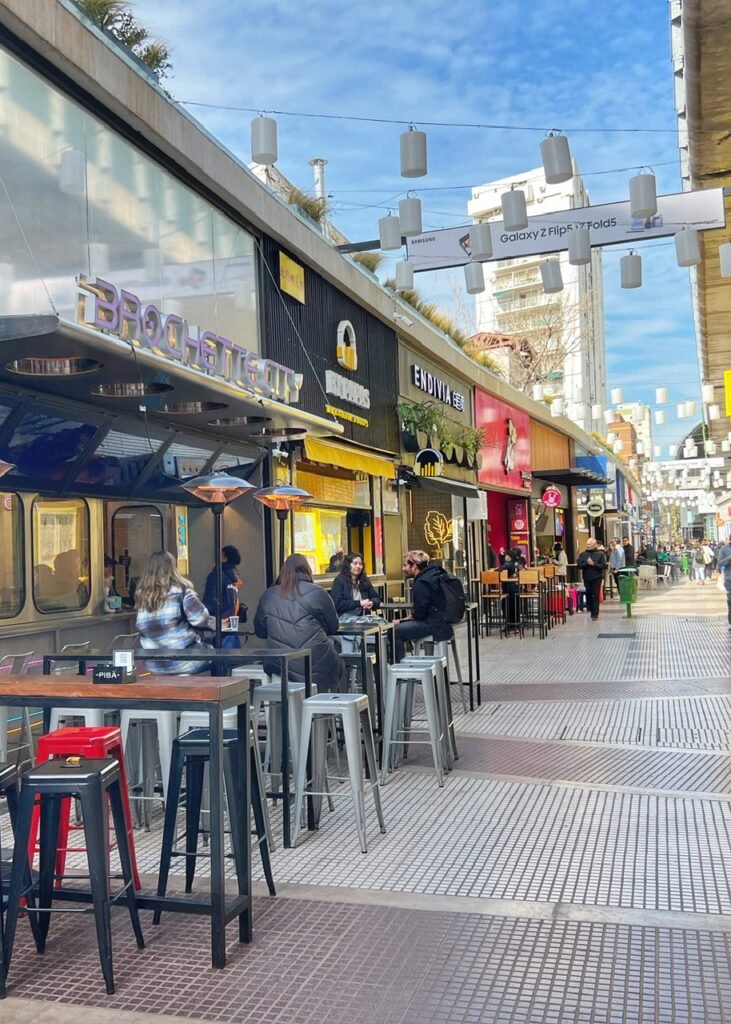

Funnily, other nationalities weaseled their way in as well.


But Dumpling Pong and Peko Peko seemed way more fun.


The only problem? We weren’t hungry, having just ate lunch before we arrived! That said, we’re gonna have to come back for a redo.
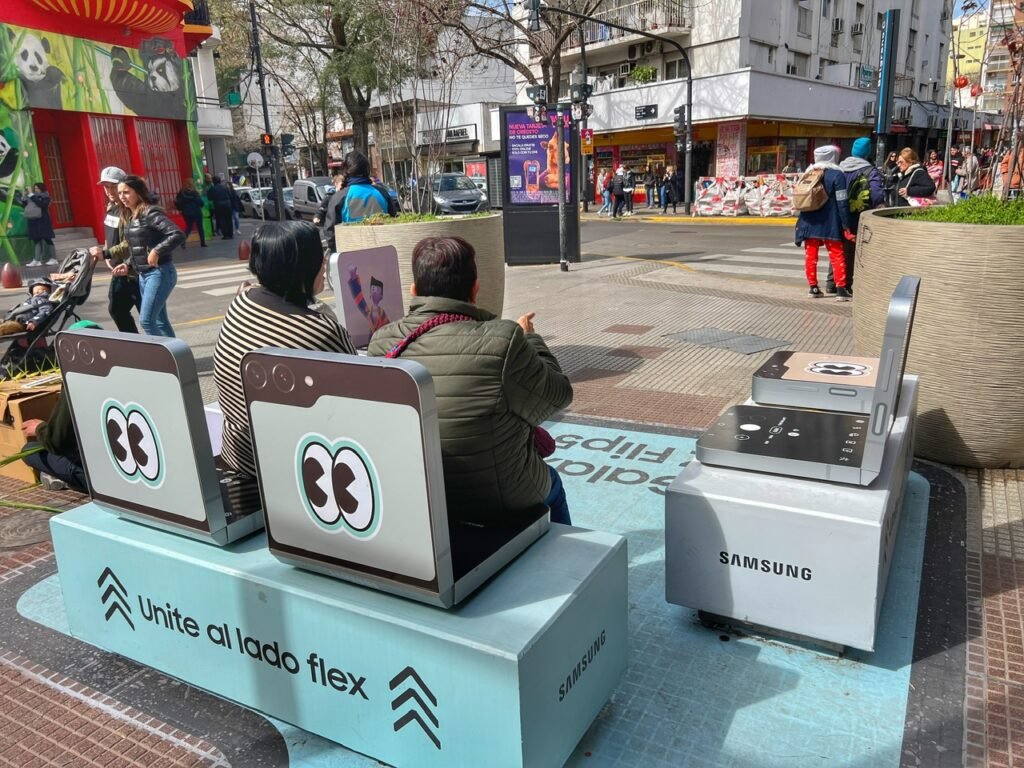
Need a break? Why not curl up inside a phone…
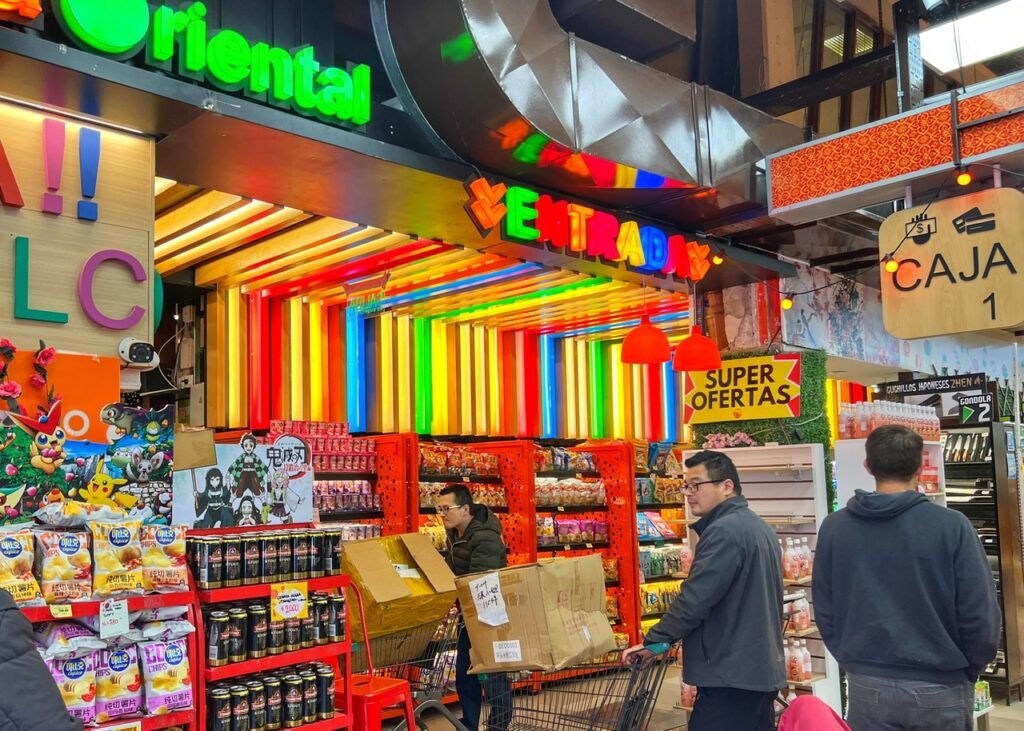


But some of the most fun places? The grocery stores! Their selection of foreign foods was unbelievable. And also…mariscos!! And the loveliest spuds we’ve ever laid eyes on.
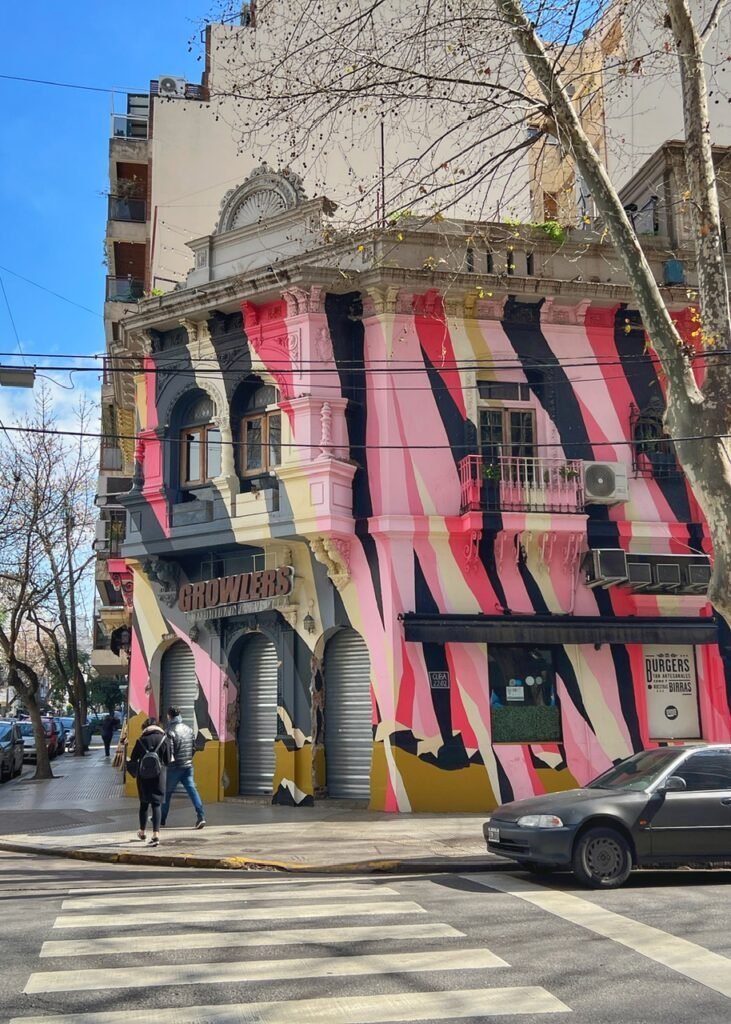

Now that is quite a paint job!! How fun!


The Manhattan Club Grand Cafe is a serious blast from the past on Avenue Cabildo. We loved the vibe of yesteryear but it seemed very desolate and empty. Hope it makes it!
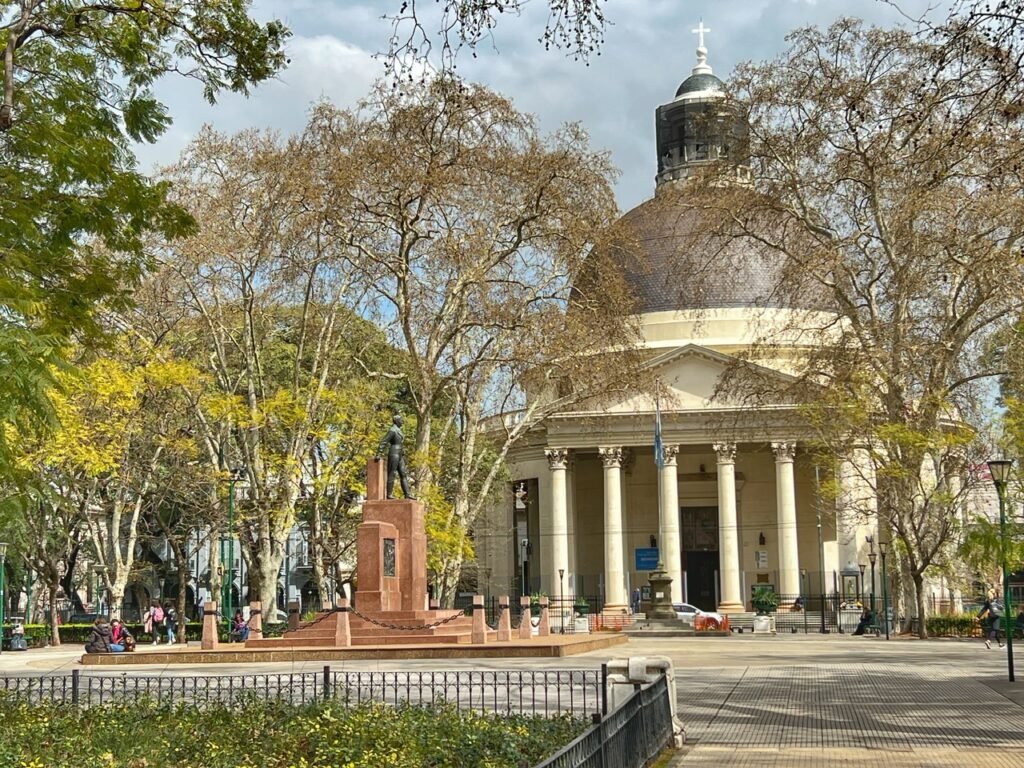
The Plaza General Manuel Belgrano is a spruced-up park next to a beautiful domed church.


A multi-hued alien in front of the Buenos Aires Fine Arts Museum and a mural that seems bizarrely out of place.
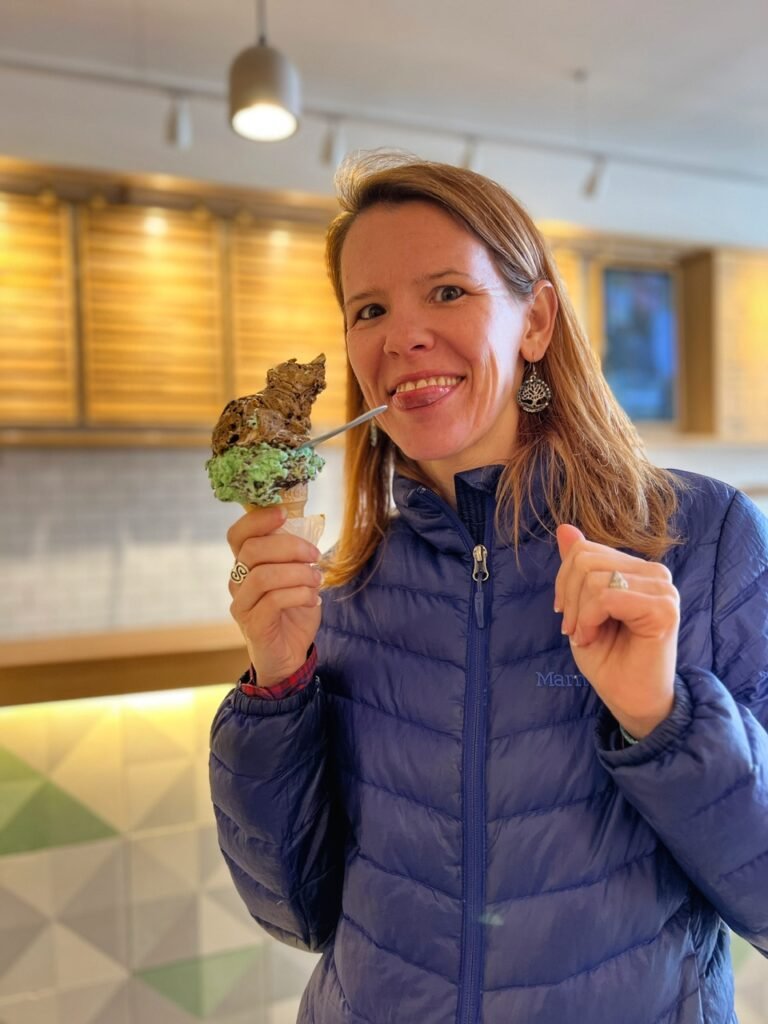

We’re wearing puffy coats but that doesn’t mean we can resist Italian gelato for $1! 😅 After all, Mandy had earned her treat after a trip to the lady doctor. A consultation, ultrasound, and mammogram cost $47 and she visited a stellar English-speaking specialist.

We then met up with Elliott a friend, of a friend from Maryland (US) and had a great time chatting over cervezas artesanales.
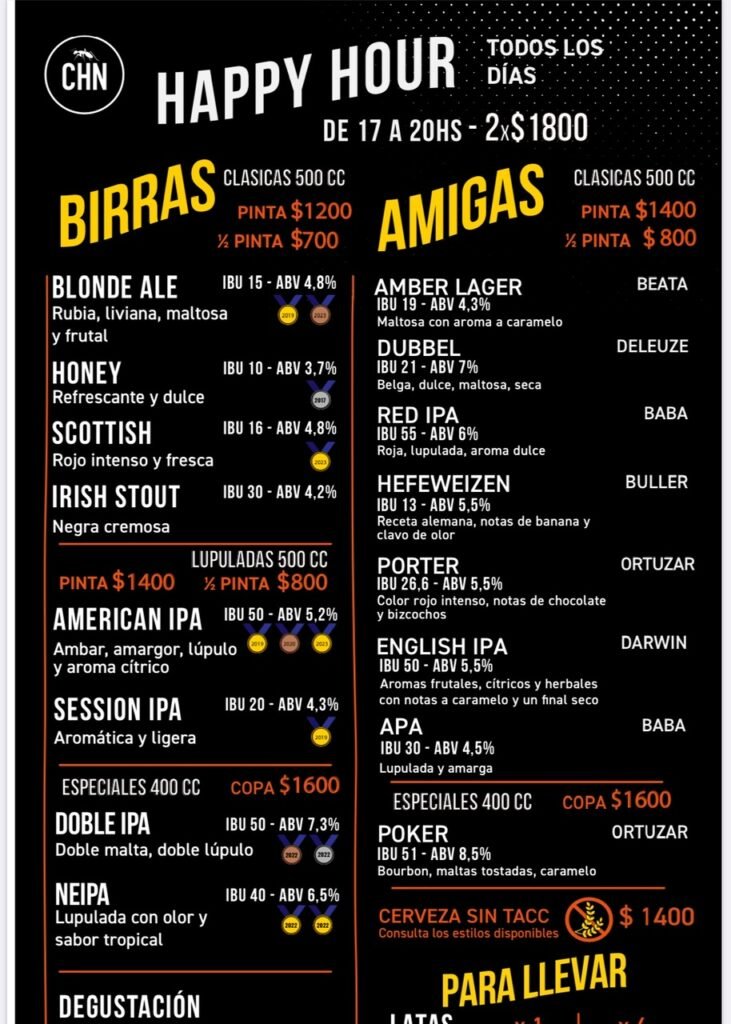
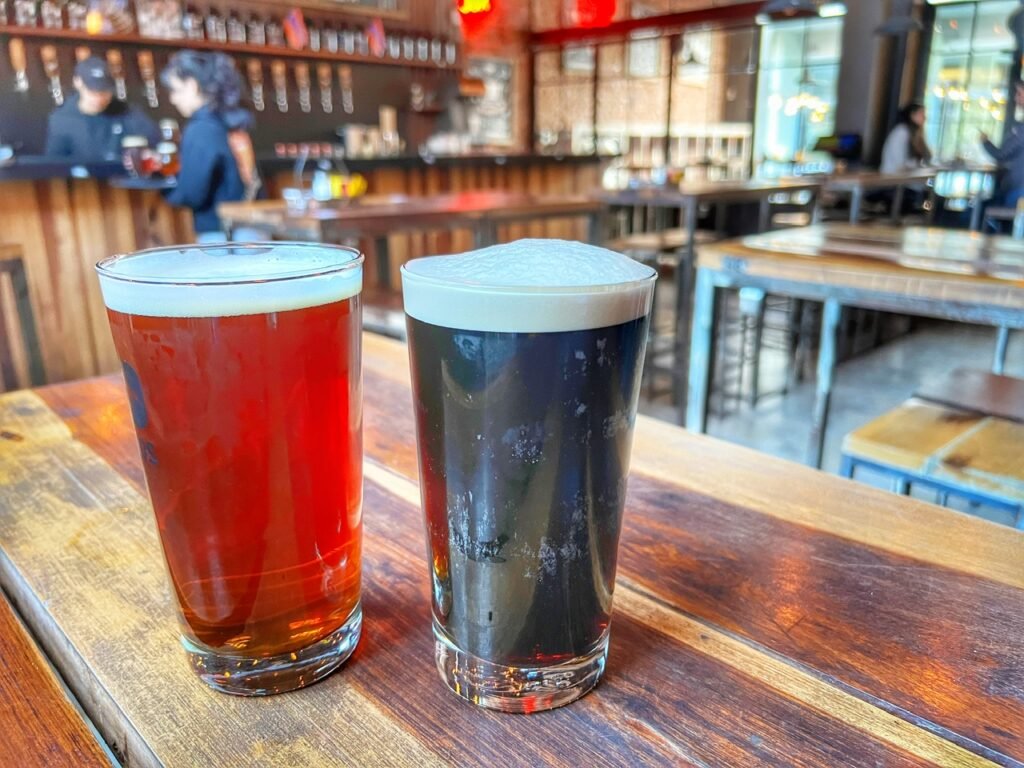
Thank to an incredible happy hour, the value got even better than normal. Four craft beers, a falafel and a tip for $10.
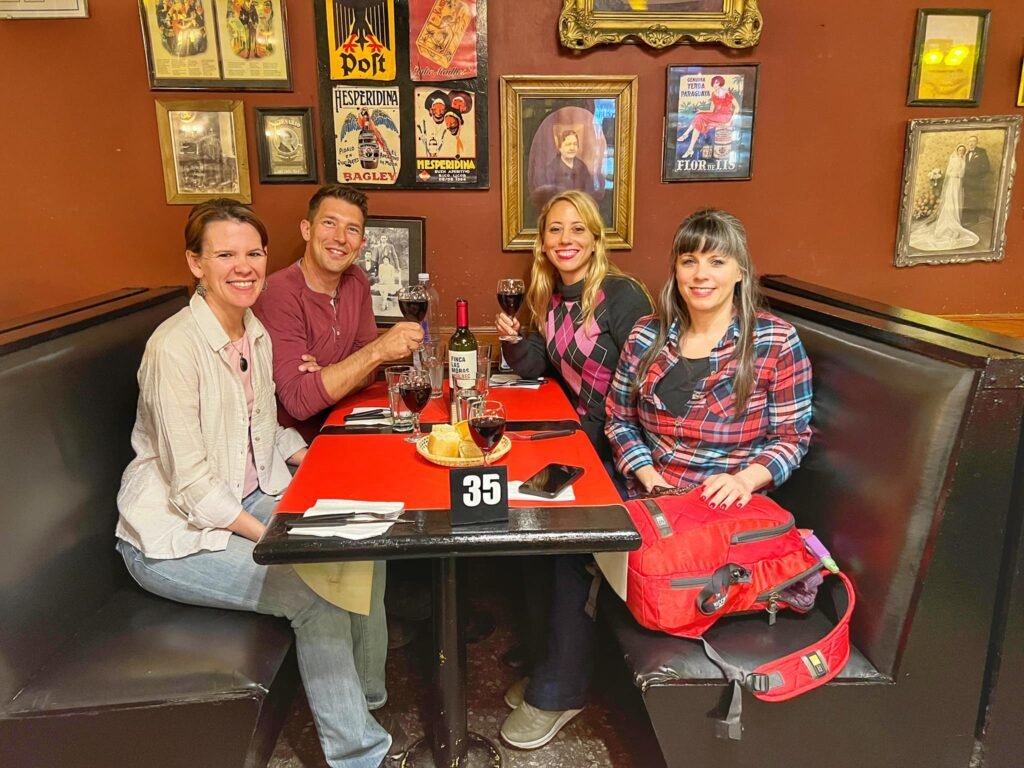
On another night our new local friends, Vanessa and Silvana took us to a traditional Argentinian restaurant called Bodegan BellaGamba where we indulged in some delicious Malbec, great conversation, a lively Porteño-filled atmosphere and our first official Argentine milanesas, which are called supremas if served as pollo (pronounced poy-show here) instead of beef/pork. It was absolutely delicious and we had such a good time.
Exploring San Telmo


One thing we simply embrace about Buenos Aires is its constant connection to another time. One such way it exudes this is through its cafe culture. To us, there is absolutely nowhere in this world like a vintage corner cafe with giant windows to experience a latte accessorized with foam than in this city. That said, since most of our friends here enjoy their coffees far too late in the day for our nocturnal rhythms, we eventually had to strike out on our own in the morning to make it happen.
We combined this effort with a jaunt to the weekly artisan fair in San Telmo, which is a lively and attractive bohemian neighborhood we considered staying in but are quite happy we chose Almagro.

To get there, we rode the red or B metro line, which is such a treat because it is also very retro. In fact, it was first opened in October 1930 and to this day, uses Mitsubishi cars lined with velvet seats, complete with Japanese writing and conductor boxes from 1959. It was fitting for us to see this dapper Argentino while cruising along.



Upon climbing out of the underground, we slid into Obrador, a cafe and bakery for a little slice of heaven since we rarely treat ourselves to coffee outside our of apartments/hotels. Why? You might ask. Because we have developed morning routines that are essential to living our lives on the road. It’s the one “normal” thing we hold onto. Regardless, this day was well worth breaking that routine. Cost for a latte or cafe con leches were $1.55. And don’t forget the handmade dessert and savory pies.
Surprisingly, we weren’t alone. Some people do actually wake up to appreciate Sunday mornings in Buenos Aires. Because of this, it’s truly nice to be able to get a coffee at all hours. Not something you can enjoy in certain European countries on the Iberian Peninsula…(not naming names 🤣.)
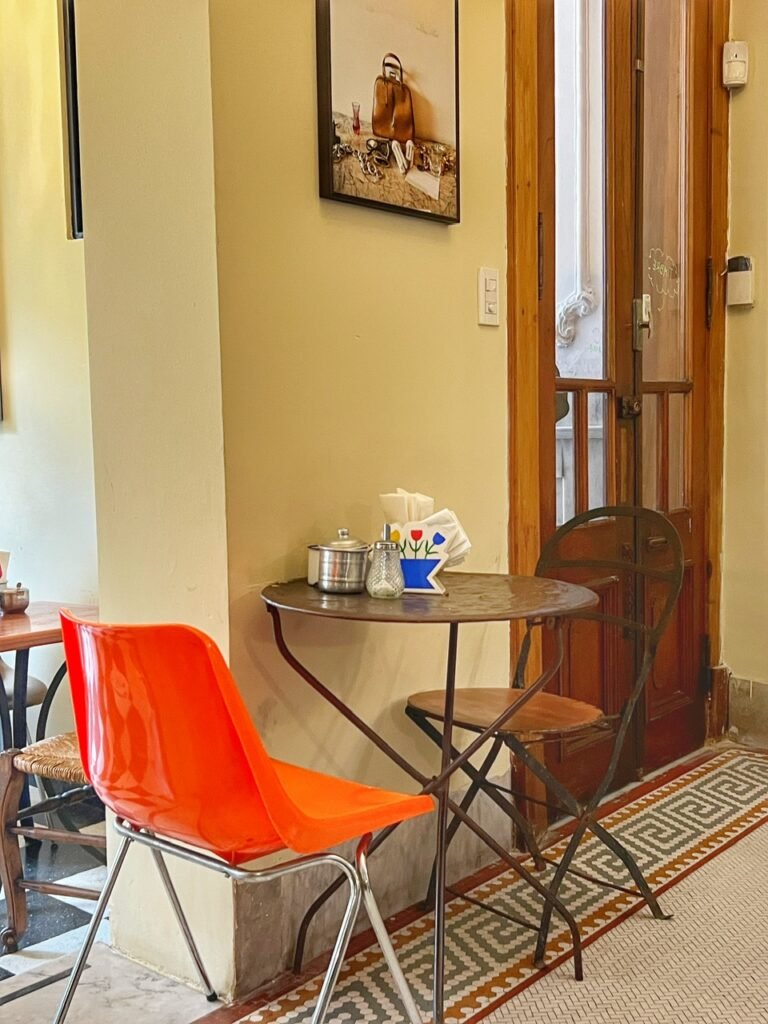
We loved that every single chair had a unique fingerprint in this cafe.
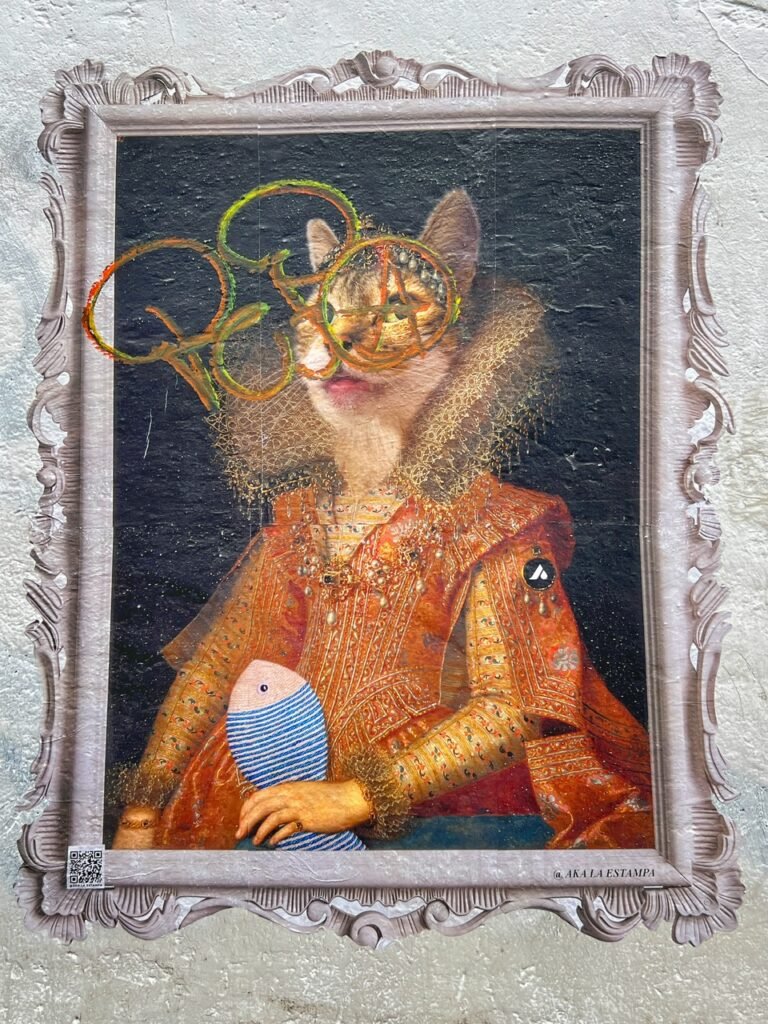
Moving on…we found the first of many street art images paying homage to the royal feline.

You can see why it’s hard to choose a cafe. Every single one looks cozy and welcoming.
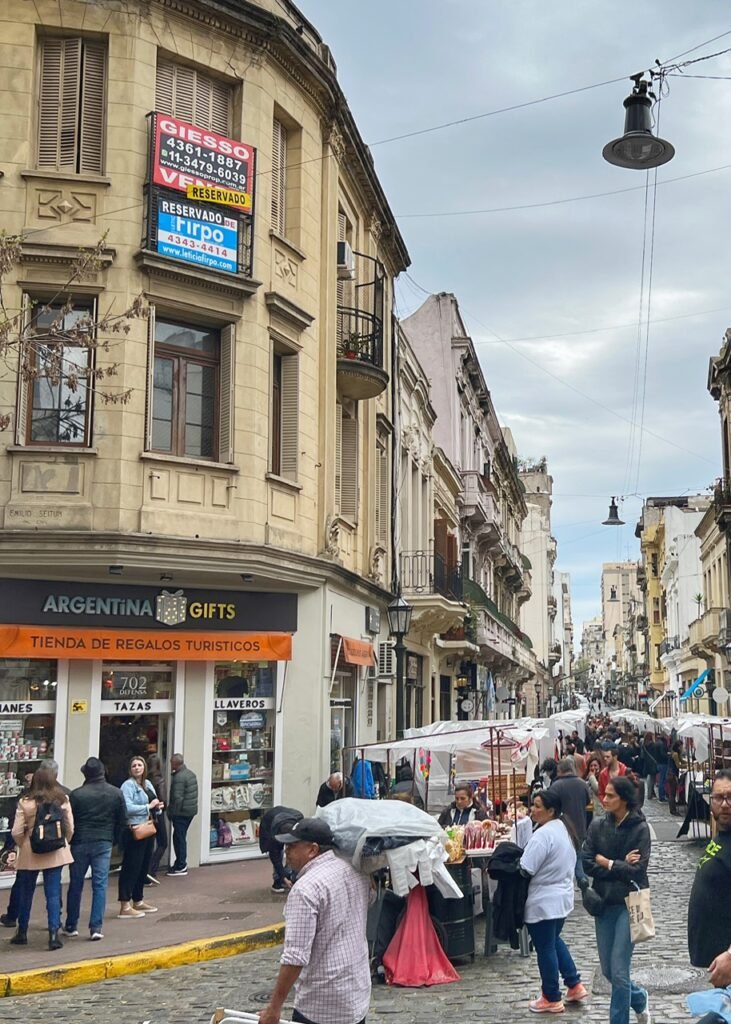

A few blocks later we arrive to the “Feria de San Telmo” or Sunday artisanal street market which knitted blocks upon blocks together with unique goods. We were blown away by the quality, selection and price of the goods. But since we’re rarely in the market to buy, it was easy to just look.

The bench dedicated to Mafalda, the most famous cartoon of Argentina, was adjoined with a queue at least 20 minutes long of tourists vying to take a photo with the famous six-year-old and her friends. We didn’t know enough about Mafalda to lose 20 minutes of our lives, so we just decided to take a picture of this lady and read about her online (Mafalda, not the lady 🤣).
So, according to “Secrets of Buenos Aires,” Mafalda was born in 1963 and is “a reflection of a middle-class family living in Argentina with a progressive mindset. She is concerned about world peace and humanity issues and approaches these topics with a serious but upright attitude.” Her fame spread to other parts of South-America, Quebec, Asia, and parts in Europe but she probably looked a bit too much like Lucy from “Peanuts” to get a big break in the States. Sounds like we could have used her big ideas, however.

One of many BA government buildings.

This guy has quite a load to carry.

The Minimum House is the narrowest house in the city with only 2.8 meters wide its facade and 13 meters deep. The upper room is only 2.2 meters wide. The house retains its original materials from the early nineteenth century and is located on a property where a large house that belonged to the Peña family was located. The legend of the neighborhood says that it was built by a freed slave, on a small portion of land ceded by his former master, in gratitude for his services and so that he had his home as a free man. This tradition could not be verified by documentation, but there is an oral tradition that since 1890 has called it “the slave’s house.”

One of many Dulce de Leche stores. We noticed that the stores and souvenirs in San Telmo were definitely more expensive than in others.


The emblematic 1897 Mercado San Telmo was hopping this Sunday morning. It is littered with antiques, first class gastronomy and…people.
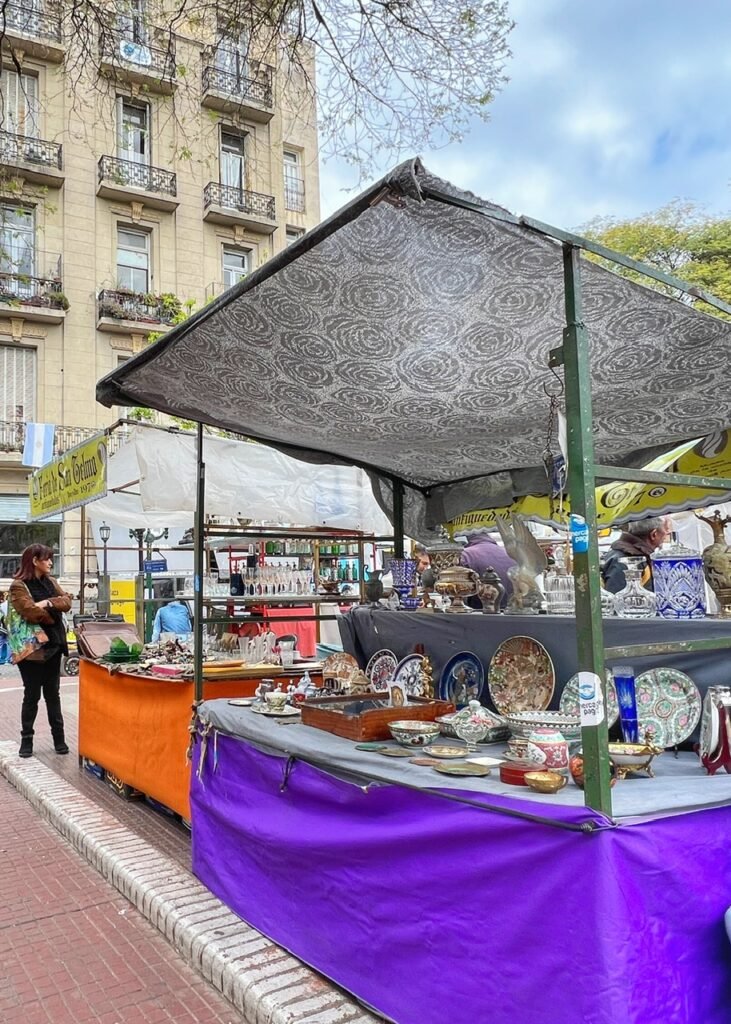

Speaking of antiques, there was also a significant market dedicated to things you find in grandma’s attic. And…so. Much. Beautiful. Art. Including this very poignant post-COVID masterpiece which showcases masks being used as parachutes.

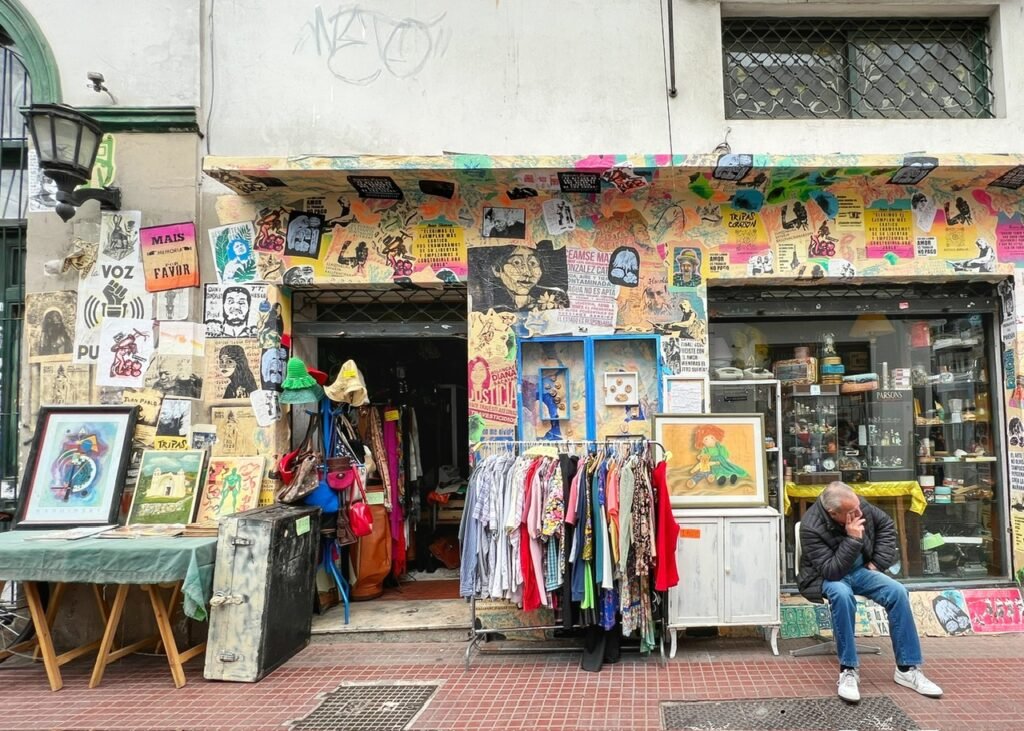
Mandy standing in front of eclectic storefronts. San Telmo is a thriving neighborhood!
Pizza in Buenos Aires…a MUST!

It doesn’t matter where you go in the world, pizza is typically a safe bet for an inexpensive and delicious meal, but in Buenos Aires, pizza is truly…a little piece…of Italy. In fact, from 1870 to 1960, approximately two million Italians immigrated to Argentina, which drastically changed the demographics of Argentina for years to come. Today, over 30 million people in Argentina claim some kind of Italian heritage. (Puerto LaBoca Website.) Many of them are also granted EU passports, even today, because of it.
The pizza they brought with them, however, evolved uniquely as Argentinian, and unlike any we’ve had elsewhere in the world. It’s beyond gooey, featuring the kind of cheese that rolls off the pie like hot lava and covers every square inch of it, including the crust. It’s also thick with a buttery crust that tastes more like crispy garlic bread than traditional pizza dough. In short, it’s very well worth the stop.

We wanted to avoid some of the more touristy joints, so we took our local friend’s suggestion to head to El Imperio de la Pizza in Chacarita, where we definitely seemed to be the only foreigners. It’s been around since 1947.


And even at 3 pm on a Thursday, there were plenty of people present. We got a grande pizza, vying for leftovers, which cost people with dollars about $10 and a “tanque” of cerveza for $1.50.

Peering inside the bustling kitchen


We greatly appreciated the intricate vintage details, including the walls lined with Argentine celebrities of yesterday and the option to stand if you don’t wanna pay to sit down. It was a truly fantastic atmosphere. We highly recommend 🙂
If you gotta go to the doctor…
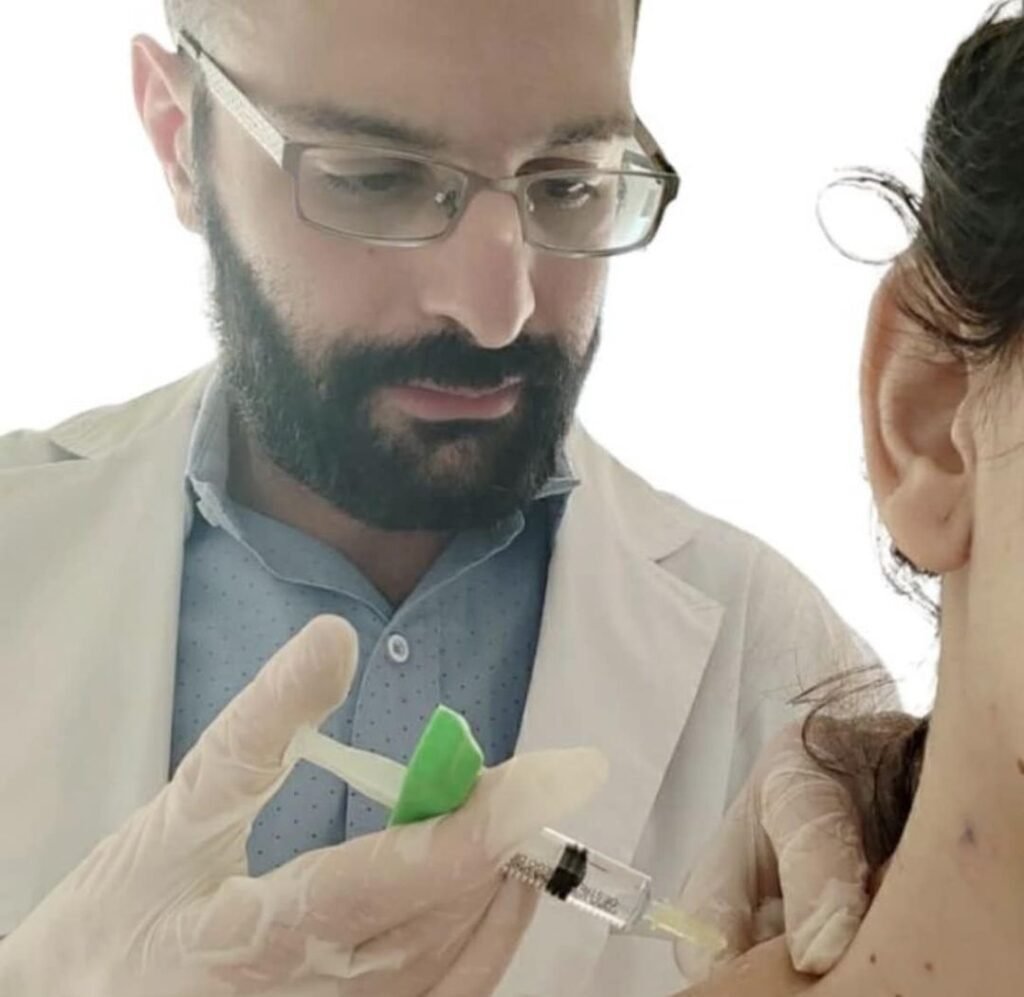
We continue to have amazing medical experiences abroad! In the instance in Buenos Aires, Mandy wasn’t able to turn her head much due after one too many headstands. Eek! Dr. Hara Duck, at Consultorio Médico, (a general practioner), got her in within three hours of my first inquiry, gave her some shots in the neck, and sent her with a prescription for muscle relaxers and an xray if needed, which it fortunately wasn’t. He continued to be available all week by text to check in with me, AND give me some additional advice on other issues she was having. She so wishes he could be her regular doctor! After her visit, she was about 80% better and planned to take a break from headstands for awhile! ![]() The cost for the visit was 8000 pesos/$11.87 and the prescription was 1400 pesos/$2.08.
The cost for the visit was 8000 pesos/$11.87 and the prescription was 1400 pesos/$2.08.



